Foreign Rights
Spring 2023 Arts & Crafts / Nature

More information about our titles and fact-sheets on ftp.hauptsachen.ch
User:
foreignrights©hauptsachen.ch
Password: rightsHAUPT

Spring 2023 Arts & Crafts / Nature

More information about our titles and fact-sheets on ftp.hauptsachen.ch
User:
foreignrights©hauptsachen.ch
Password: rightsHAUPT




Roberta Bergmann (*1979) studied communication design with a focus on illustration and book design. Roberta teaches in the field of design and creative business start-up. She was employed as a visiting professor for design basics at the University of Fine Arts in Braunschweig. In addition to her teaching, she works for various publishers as an author, illustrator and book designer. Since 2019, she has been running the community and podcast "Der kreative Flow". She lives as a freelancer and creative in Braunschweig, Germany.
www.robertabergmann.de www.derkreativeflow.de
Roberta Bergmann160 pages, colour photographs throughout hardcover
format: 170 x 240 mm
publication date: September 2023
rights available: worldwide
Why not leave the desk and go outdoors with "scanner eyes" and a sketchbook? Outside you can find a wealth of materials, encounter special weather conditions or interesting places - and meet other people.
In her new book, creative expert Roberta Bergmann presents projects in the great outdoors or in the middle of the city that can be done individually or in groups. With camera and drawing pencil, but also with sun, water, snow and wind, assemblages, ice sculptures or photographic light drawings in the dark are created, for example. Many innovative techniques and exciting experiments guarantee to inspire further creations!

City and nature are perfect sources of inspiration
Drawing, printing, taping, shaping or photographing...




Helena Arendt studied art and art education and worked as an art teacher for several years. Since 1992 she has been a freelance artist in Münster and on La Palma. She works intensively with natural colours and ceramics. She has already shown her sculptural works and pieces of jewellery at various exhibitions. She leads courses for children and young people and organises workshops for adults.
75 Ideas for Creating with Children
176 pages, colour photographs throughout paperback
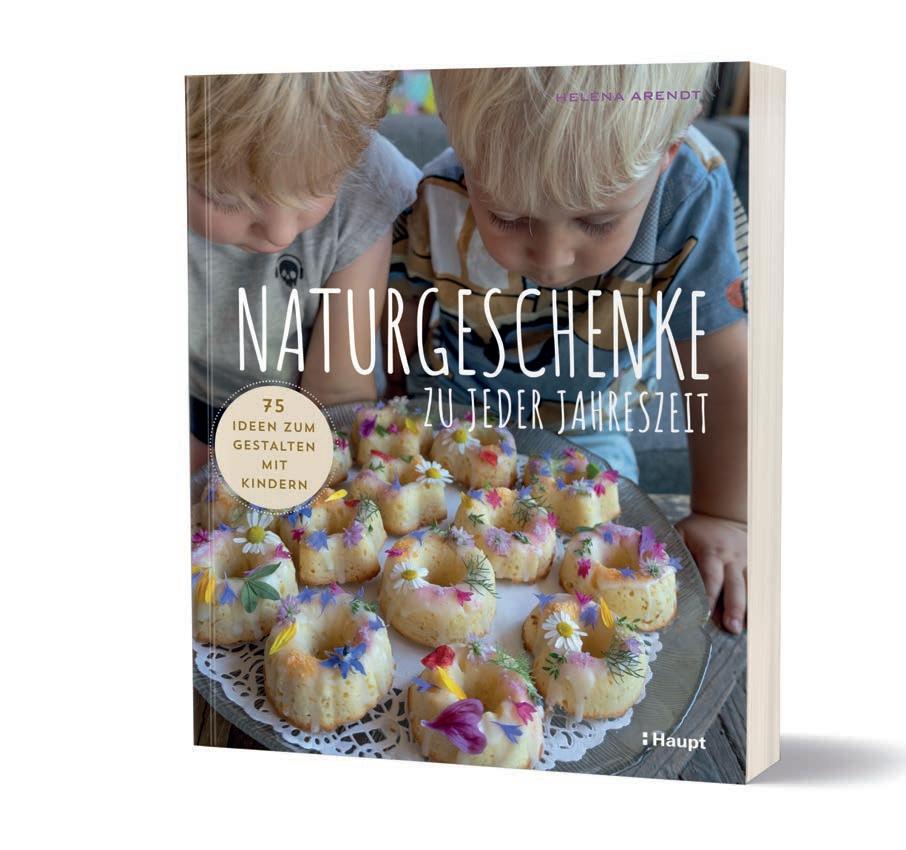
format: 210 x 250 mm
publication date: September 2023
rights available: worldwide
It's fun to make something for your loved ones out of found objects. And the beauty of it is that every gift is unique, because every stone, every flower and every piece of wood is unique, too. With the exception of a few tools, all materials can be found for free in nature. In her new book, Helena Arendt presents 75 gifts from nature that will bring joy to both children and the recipients of the gifts. Structured according to the seasons, original gifts such as scented sachets, cough drops or funny stick figures are created from blossoms, leaves and grasses, seeds, vegetables and fruits, wood, sand and stones.
After "Nature Gifts" (25 000 copies sold) now the new volume by Helena Arendt



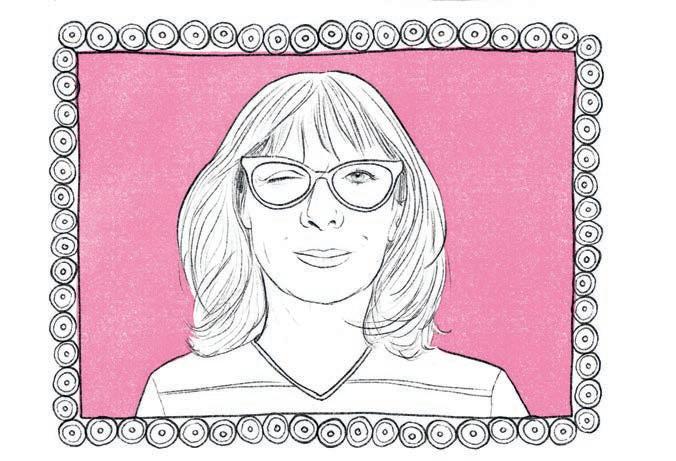
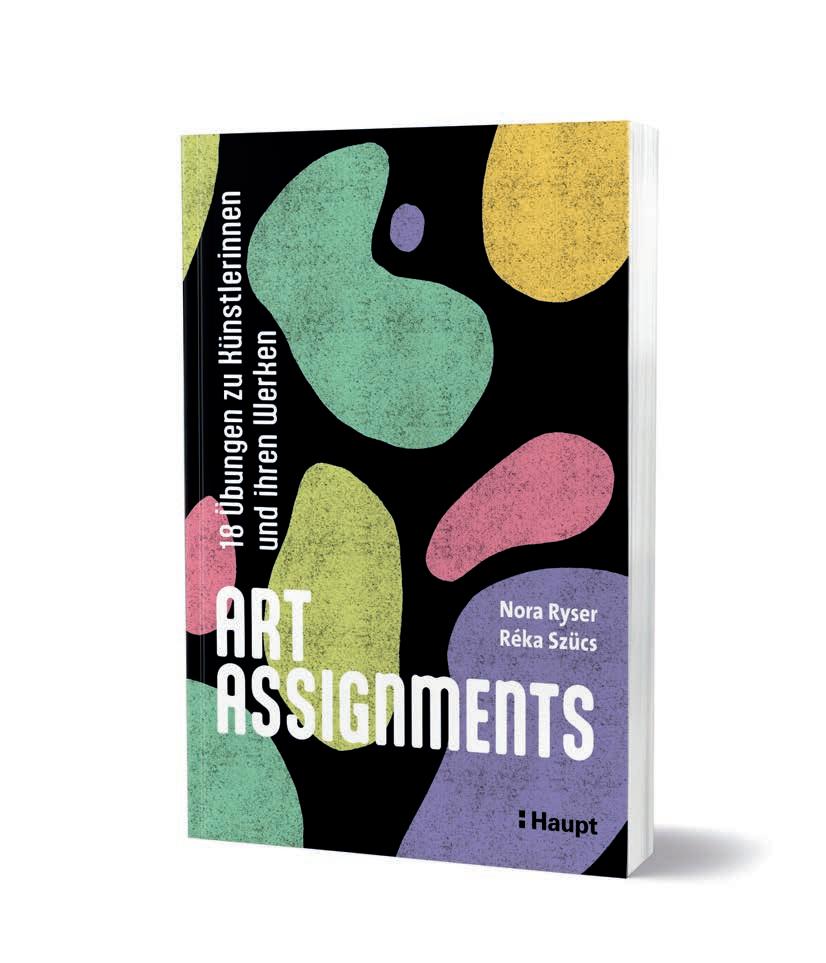
Nora Ryser (1994) grew up in Berne and studied illustration in Lucerne. She has been working as a freelance graphic designer and illustrator since 2016 as well as an art teacher. In 2023 she completed a Master's degree in Art Education at the University of the Arts in Berne. noraryser.ch
Réka Szücs graduated from University of the Arts in Berne in 2023 with a Master's degree in Art Education and works as an art teacher, illustrator and photographer. In her artistic work, she critically examines ways of representing women and social norms.
reka-szuecs.com
Art Assignments
18 Exercises on Women Artists and their Work
128 pages, colour illustrations throughout paperback
format: 170 x 240 mm
publication date: September 2023
rights available: worldwide
There are many blind spots in art history, especially when it comes to the work and positions of women artists.
To fill some of these gaps, Nora Ryser and Réka Szücs have developed 18 art projects based on 18 women artists, which can be carried out in class, in workshops or at Art Nights. Each project focuses on a particular aspect of the selected artist, such as her oeuvre, style or technique, and is then put into practice with the help of illustrated instructions. Topics such as form and colour, body and space, photography and the moving image, illustration and product design or visual communication are playfully explored and encourage further study.
From Georgia O'Keeffe to the Guerilla Girls: 18 projects on women artists and their
1. edition 2018
160 pages, approx. 300 colour photographs





hardback, 155 x 210 mm
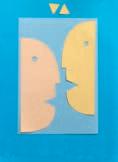
Original language: German
Rights available: world-wide, except English (world-wide)


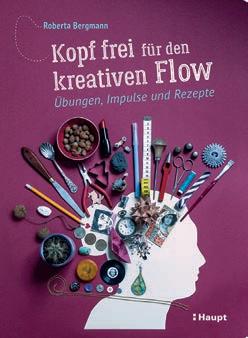
Think the opposite, Take a ride in a lift or Keep it simple – these are the recipes that feature in Roberta Bergmann’s new book. Her book is designed for all crafters and do-ityourself enthusiasts who want to improve their performance and creativity.
40 methods along with even more exercises and practical examples show you how to tackle a project and lead it to a unique result. The exercises will help, for example, when drawing a story, designing a photo series, or developing a new business idea. Should you get stuck in the middle of your project, the second part of the book contains 15 first-aid tips to master the move from flaw to flow. The author provides you with professional advice on how to get yourself out of creative dead ends, set priorities, and improve your awareness for the creative process as well as for yourself.





The author provides suggestions for teaching basic knowledge in design and visual communication. The book is a collection of practical exercises to train both the eye and the manual skills. Exercises range from simple to complex, from fast to extensive, from individual to group work. Each chapter begins with a brief introduction on a special aspect of design such as Drawing, Patterns, Composition, Photography, Form Finding, Colour and Illustration, Lettering, Characters, or Layout.
The final chapter looks into creativity techniques, presentation skills, rhetoric, and selfand time management and shows you how to optimize your creative productivity and performance.
288 pages, many colour photographs
hardback, 190 x 260 mm
Original language: German
Rights available: world-wide

This book is a collection of practical tasks from the fields of design, graphic design and illustration with views into the subject areas of three-dimensional forms and animation. The exercises stimulate creativity, they are fun and helpful if you want to prepare for a new challenge or simply want to gain more practical experience. Each chapter focuses on a creative topic such as "Size - Colour - Detail" or "Grid- Graphic - Diagram" or "Body - Space - Volume". These abstract terms can be experienced through practical exercises and form the elements of design. How to turn statistics into attractive infographics, how to reduce packaging designs to the essentials or how to display letters in 3D? This book offers ideas and examples on these and many other topics.
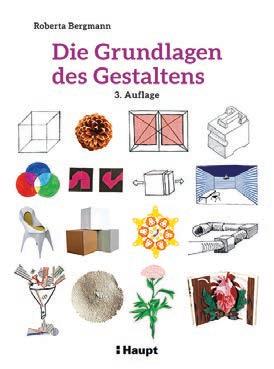
1. edition 2020
160 pages, many colour illustrations and photographs
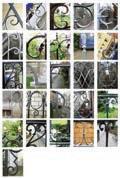

hardback, 190 x 260 mm










Original language: German



Rights available: world-wide
176 pages, colour illustrations and photographs throughout hardback, 170 x 240 mm
Rights available: worldwide
192 pages, approx. 250 colour photographs hardback, quarter bound, 235 x 260 mm
Original language: German Rights available: world-wide
Michaela Müller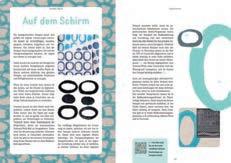
We live and work more and more digitally and at the same time have a great longing for creative activity with our hands. This does not have to be a contradiction.
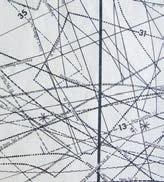
In her new book, Michaela Müller presents projects and techniques in the interplay between digital and analogue. She shows how digital tools can be ideally combined with handwork so that paper pieces become pixels – and vice versa.

Whether pocket calendars or digistamps, sun printing or stop-motion film – the author presents a whole range of digital tools in her handmade projects and thus breaks down the fear of using a tablet, scanner or plotter. Short videos deepen the instructions and make them easy to follow.
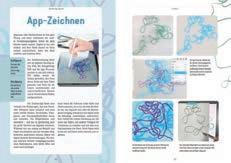 Michaela Müller
Michaela Müller
This book is about books and patterns and on how to put your own stamp on a book, in the truest sense of the word. Concretely, this book introduces you to pattern designing, printing and binding book covers.
Each chapter will introduce you to a new printing and a new bookbinding technique. To illustrate this, each chapter is accompanied by exemplary projects like photo albums and travel diaries for which, however, there isn’t only one way of making them as instructions are meant to be building blocks from which to choose your own favourite combinations. In the end you will be familiar with such skills as making clothbound recipe folders, art journals in the gelatin printing process, or block printed boxes, to name but three.
In addition to simple booklets and basic stamps, the book is rounded off by sophisticated techniques such as Japanese and Coptic binding, designing repeat patterns, and screen printing.
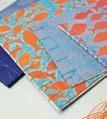

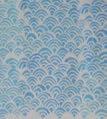

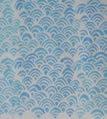

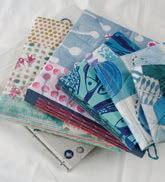



Fabric and paper are different materials, seemingly contradictory and yet so similar. This book brings both worlds together: The author presents different ways of combining fabric and paper, for example: a pencil case made of pattern paper, woven paper postcards or books with a patchwork cover.

The focus of this book is on (textile) book binding, because here paper and fabric come together in the form of cover fabrics or carrier materials. But the projects go far beyond that. In addition to useful DIY projects, there are also artistic expressions that combine the unusual and make you want to experiment.
192 pages, many colour photographs and illustrations
hardback, quarter bound, 235 x 260 mm
Original language: German
Rights available: world-wide
176 pages, many colour photographs and illustrations
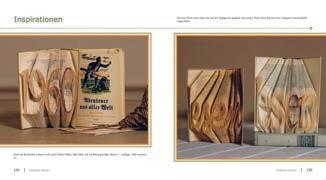
paperback with flaps, 235 x 260 mm
Original language: German
Rights available: world-wide






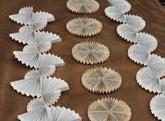


After the bestsellers "Paper Objects from Old Books" and "Paper Minis", Anka Brüggemann's new book is all about Paper Flowers – designed from old books in a beautiful vintage style. Following the basic techniques, the author presents 25 flower projects. They range from very quick and easy to an advanced and sophisticated level. The author always shows different methods and approaches, which are mostly interchangeable. Many flowers can be worked together with children. This book not only offers step by step instructions for i. e. gardenias, eucalyptus or ranunculus, the aim is to discover the most diverse flowers and to find a way to design and craft them on its own.

1. edition 2017
192 pages, approx. 200 colour photographs
paperback with flaps, 235 x 260 mm
Original language: German
Rights available: world-wide, except French (world-wide)
Anka Brüggemann
Old printed works, richly illustrated manuscripts or scripts in special fonts have their own extraordinary charm, much too pretty to discard. Not surprisingly, therefore, upcycling book pages is currently very trendy.


In her new book, Anka Brüggemann uses beautiful book pages for pretty decorations, works of art or paper ornaments that fascinate with their simple and timeless elegance. She shows how to use stripes and circles for sculpting, how to cut collages, bunting and book edges, and how to fold tiny birds and flowers. With her instructions, things that look complicated at first glance prove to be amazingly easy to make!
1. edition 2015
168 pages, many colour photographs
paperback with flaps, 235 x 260 mm


Original language: German

Rights available: world-wide
Anka Brüggemann

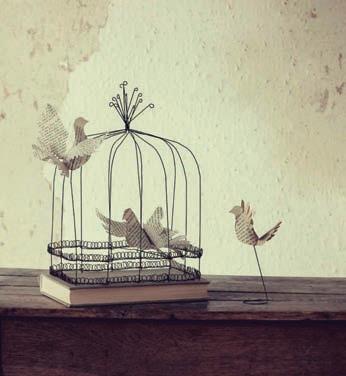
What to do with old books?
55 inspirational projects give old books a new lease of life. In ”Paper Objects from Old Books”, book pages are cut, pasted, rolled and folded to be turned into pretty collages, ingenious hanging ornaments, pretty china and cutlery made of paper. There are even whole books elaborately folded into objects of art. The chapters begin with simple objects but from project to project, the level of difficulty increases. The step-by-step instructions are illustrated in detail and each chapter holds inspiration and project ideas for further experimentation. Many templates for the projects complement the book.
1. edition 2023
160 pages, colour illustrations and photographs throughout

paperback with flaps, 170 x 240 mm
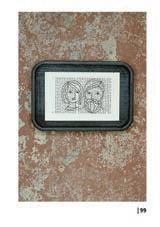

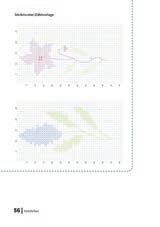
Rights available: worldwide






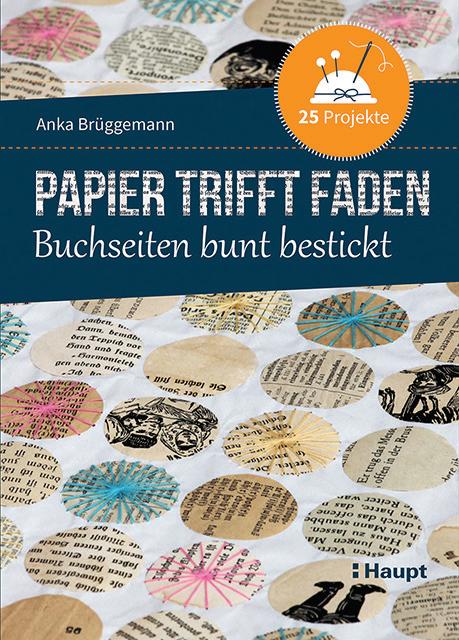
Paper and thread can be wonderfully combined, as many still remember from their first attempts at embroidery in the form of string art.

Anka Brüggemann picks up the trendy topic of embroidery, not on fabric, but on book pages. After an introduction to the special features of the material and the most important stitches, she presents 25 projects of varying degrees of difficulty: Useful ones like wrapping paper, bags or bookmarks with monograms, decorative ones like small wall hangings or playful ones like paper houses or animals. If you like, you can follow the templates, but depending on the text or illustration on the book page you are using for your project, you can create completely individual works.
Petra Paffenholz
Anleitungen und Inspirationen für dekorative Einbände und Bindungen

Japan is known for its exquisite craftsmanship which is also revealed in the art of bookbinding.The author starts with a lot of interesting facts about Japanese bookbinding traditions and explains the classical japanese binding technique. In the following practical part more than 30 projects are presented. They include further binding techniques such as the tortoise shell binding, the hemp leaf binding or some techniques developed by the author. Not only the bindings, but also the book covers are created in tradtional Ja-panese techniques: they are marbled (suminagashi), embroidered (sashiko), dyed (shibori) or stitched as a collage (boro). The result: unique books and notebooks – inspired by classical Japanese craft traditions.
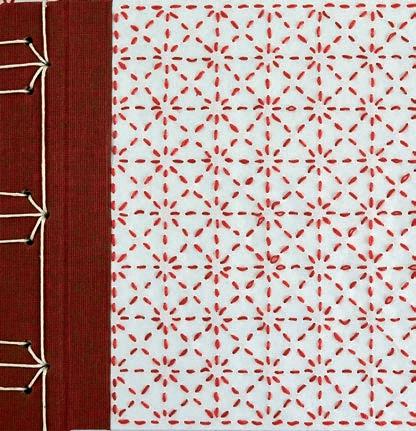
1. edition 2019
224 pages, many colour photographs and illustrations
hardback, 235 x 260 mm



Original language: German
Rights available: world-wide
176 pages, approx. 300 colour photographs hardback, 235 x 260 mm
Original language: German
Rights available: world-wide, except English (world-wide)


Marlis Maehrle, in her guidebook, motivates you to your personal collection and to displaying it in the frame of a box. The techniques and concepts for a successful display presented in this book make use of easily available boxes like cigar boxes, cookie tins or cardboard box packaging. The journey of discovery starts with simple examples for arrangement, grouping and fixation and goes on to ambitious designs with interesting paper textures and finally to constructing your own individual boxes. For further inspiration, the practical part of the book is followed by a gallery of a wide range of works by different artists.

Einteilungdurch Werkzeug Malkörper30x20cm EineGrundierungdesMalkörpersmitGessoergibtinVerbindungmitlasierendaufgetragener,starkverdünnterAcrylfarbeeinedurchdieStrukturderPinseltrichezartbelebte Hintergrundfläche. Umdenrelativflachen,größerenKastengutausfüllenzukönnen,isteineEinteilung durchmitWeißleimeingeklebteflache,kleinereSchachtelnoderSchachteldeckelauf jedenFallschöner,alsdieObjekteselbsteinzukleben.Sokönnensieeinfachaufgestellt undwiederentnommenwerden,undauchderPlatzzwischendenSchachtelnbietet AusstellungsflächeoderRaumfürAbbildungenundBeschriftungen.Zudementstehen durchdie»boxesinabox«lautereigenekleine,geschützteWelten,dieentsprechend gestaltetwerdenkönnen. DazudieSchachtelnmiteinemvereinheitlichendenGessoanstrichgrundieren,nurdie kleinenSchubladenvonStreichholzschachtelnpurlassen,siesindneutralgenugund
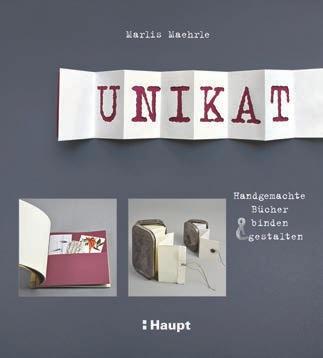 Marlis Maehrle
Marlis Maehrle
dicksein,unddaderDurchscheineffektbeidiesemProjektwichtigist,eignensicham bestenButterbrotpapieroderzähesSeidenpapier. FlächenzumAbreibenfindensichaufTischplatten,Holzböden,etc.,–experimentieren lohntsich,jedefeineUnebenheitergibtungeahnteErgebnisse.FürdichteFrottageflächendasBlattimmerwiederleichtdrehen,damiteineabstrakteStrukturentstehtund


192 pages, many colour photographs
hardback, 235 x 260 mm
Original language: German
Rights available: world-wide
1
A handmade book is an extraordinary gift and always something special for your own notes, sketches, memories, collages or designs.
The handmade books presented here - such as folding books, paper bag books and zigzag books - are truly exceptional but still easy to make, because even simple bookbinding techniques offer a vast range of design options which can be mastered without further knowledge or special equipment.


As for judging a book by its cover, the author offers cover designs made from cans and recycled materials, to pick out only two of the striking examples.
Without striving for perfection, this book is a fresh, fun and fearless invitation to experiment with the “wonderful containers of messages” called books.
192 pages, colour illustrations throughout hardback, 235 x 260 mm
Original Language: German
Rights available: world-wide
MaehrleWe all deal with paper every day but this flood of manufactured paper products often obstructs our view for the beauty, variety and uniqueness of this material. Simple techniques which rely on the sensitivity of the hands as the main tool show how to create your own individual paper world. This book presents 35 projects for making gifts and home accessories such as paper bowls, jewel cases, and sculptures that all convey the special magic inherent in this material. Surprisingly it is often the combination with natural materials and the use or re-use of supposedly worthless paper which lead to the best results.
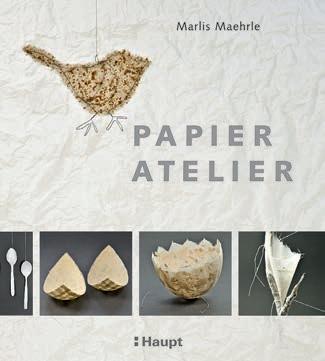
In technology, science, handicrafts or art, spatial structures are everywhere. Most of the "folding forms" shown in this book are technically easy to produce and result from the free combinability of triangles, squares, pentagons and hexagons that are joined together in a modular way.
Alexander Heinz continues the series of successful "FOLDING POLYHEDRA" without taking them for granted: He takes up the theme of folded spatial forms once again. The view on the axes of symmetry is of particular importance because it makes it easy to understand and distinguish individual models. Further didactic tips make this book practically applicable in schools as well as in creative workshops.
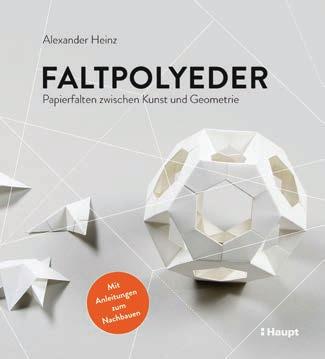
176 pages, many colour photographs and illustrations
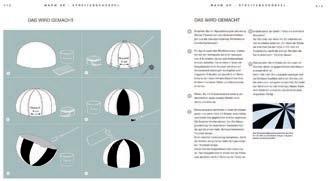
hardback, 235 x 260 mm
Original language: German
Rights available: world-wide, except English (world-wide)

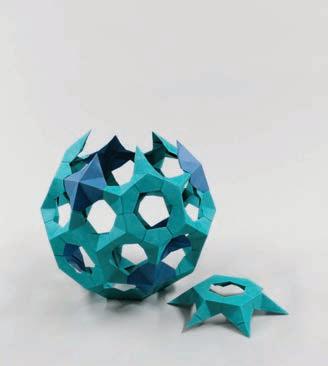



In geometry, a polyhedron is a solid, that can be described by its vertices (corner points), edges (line segments connecting certain pairs of vertices) or faces (two-dimensional polygons) – such as a cube for example. Alexander Heinz shows in his book how all regular and semi-regular polyhedra can be folded out of paper. Each polyhedron is introduced by step by step instructions from the base to the module to the finished model. By using coloured papers for the different modules and clear graphics, the folding instructions are easy to understand.This work joins mathematics with art. A treasure for those who like to combine abstract knowledge of forms with vivid paper craft.
1. edition 2019
192 pages, many colour photographs and illustrations
hardback, 235 x 260 mm
Original language: German
Rights available: world-wide, except English (world-wide)
Roswitha Paetel

Papier-mâché pulp is a fascinating material to work with. It is made from newspaper, water, glue, chalk, and gesso.

The projects in this book are grouped according to several difficulty levels, from objects that can be mastered by skilful beginners to more complex work. The author provides a systematic overview of tools, recipes, primers and techniques. The book concludes with an insight into the fascinating history of this rediscovered material and its use in arts of various fields.
232 pages, many colour photographs
hardback, 235 x 260 mm
Original Language: German
Rights available: world-wide
176 pages, 4c photographs throughout hardback, 170 x 240 mm
Original language: German
Rights available: world-wide
Katja FalkenburgerPaper is patient - and an amazingly tough material. It can be beaten, pressed, squeezed, punched or driven with chisels. What is needed is a hammer and a few nails as small chisels. These simple tools make it possible to create unique structures and patterns by hand on very different types of paper.
Katja Falkenburger presents various striking techniques for creating dots, lines or surfaces with the help of step by step instructions. In addition to works in noble white, she also shows how embossing works on coloured paper or in combination with graphics, coloured pencil or watercolour.
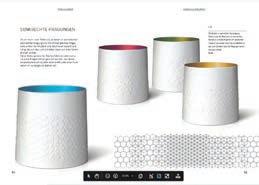
A book that whets the appetite for the haptic design of diverse paper surfaces!
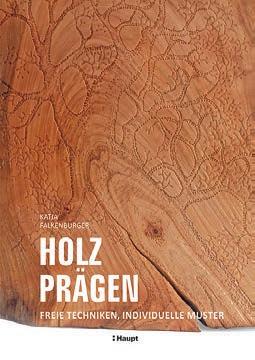
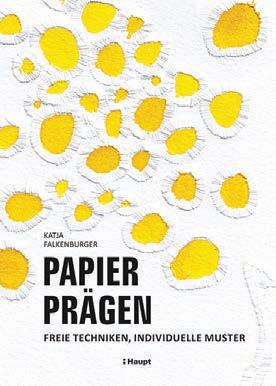
1.
176 pages, colour drawings and photographs throughout Hardback, 170 x 240 mm Rights available: worldwide
Katja FalkenburgerWood embossing is exciting because, unlike metal or paper, wood does not offer a uniform background – but instead a lot of natural design elements such as grain, cracks or colour gradients that can be incorporated into the pattern.

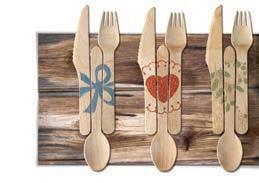
The focus of this book is on the techniques of embossing. If you master these, you can create your own patterns on wooden boards, branches or three-dimensional objects. With the four basic techniques, you are able to emboss exciting contours, structures or entire surfaces, and with colour and surface treatment, the spectrum is further expanded. With this book, the free artistic development unfolds one after the other, so that soon no piece of wood will remain unembossed!
144 pages, 4c photographs and illustrations throughout hardback, 170 x 240 mm
Original language: German
Rights availabe: world-wide
Marita Drees
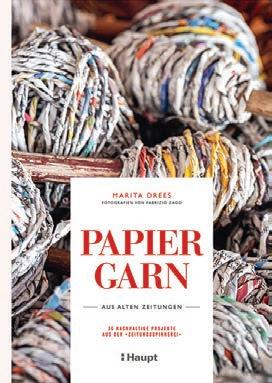

Newspapers are too good for the bin!
Marita Drees, founder of Germany's first newspaper spinning mill, shows how a robust and versatile paper yarn can be spun from a disposable product with a few tools and how it can be further processed in various textile techniques.
Following these basics, 30 projects of varying degrees of difficulty are presented. Once you have familiarised yourself with the special features of the material, you can give free rein to your creativity and design and create baskets, home accessories or even items of clothing yourself.
A book for creative and artistically interested people who care about sustainability and are open to new things.

160 pages, many colour photographs and illustrations
hardback, 235 x 260 mm
Original language: German
Rights available: world-wide
Cyanotype - also known as Sun Print or Iron Blue Print - was invented 178 years ago and is very much in vogue again today. It is an artistic process in which charming objects can be transferred to paper with the help of light, water and a light-sensitive solution. In her new book, Marlis Maehrle experiments with light and shadow, positiv and negative, different carrier materials such as paper, textiles or wood and of course with many interesting objects. The results are delicate photograms with the typical blue background. These pictures are small works of art which can be processed into cards, book covers or gift wrappings. Marlis Maehrle does not use ready-made cyanotype kits for the projects in this book, but she reveals how to make the light-sensitive solution and also how to dispose of it properly.

1. edition 2020
208 pages, many colour illustrations and photographs

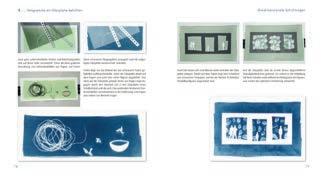
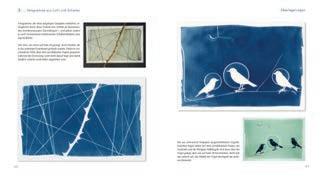
hardback, 210 x 260 mm
Original language: German
Rights available: world-wide
Lena Zeise




Handwriting is an everyday thing for us. Learned at school, we either became friends with the "cursive handwriting" or soon exchanged it for block letters. In fact, cursive handwriting styles have been part of our human civilization for thousands of years and have served to store knowledge.

Scripts or fonts have been lost over time, rediscovered, banned and elevated to the status of art. This richly illustrated book takes you on a journey through the history of European handwriting, presents historical and political facts and takes up current tendencies and discussions on the subject of handwriting.
Since handwriting is strongly influenced by the writing tools and the carrier materials, excursions to goose quills, slates and fibre pens are also an essential part of the book.
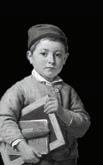
unter anderem für seine
Unterbrechungen des Schreibflusses entstehen
Chris Campe Handbook Handlettering









Hand lettering is in vogue on books, slate, package design or home accessories. The nice thing about lettering: You are free to do whatever you fancy; in fact, this is exactly what makes lettering. But the freedom has one limitation: the key factor is that it looks good!

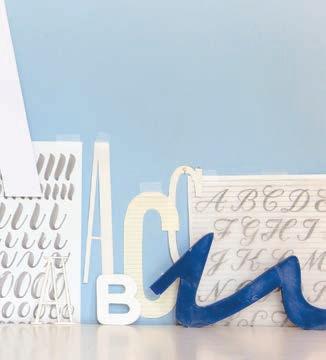
1. edition 2017
160 pages, approx. 250 colour
photographs
hardback, 235 x 260 mm


Original language: German
Dekration Die i-Tüpfelchen Ok, die Struktur der Buchstaben steht, ihr Körper ist wohlgeformt, die Serifen sindellen Buchstaben-Look. Schlagschatten und Schraffurschatten, Outlines und Inlines, W eines guten Outits,eingeplant sein. Im Alphabetwenn alles hervorgehoben ist, gezeichnete Schrift braucht garliegen die Kanten von hellenVerzierung Noch weiter aufgeblasene Form oder verringern. Um Schatten richtigEin Schlagschatten liegt versetzt stellt man sich zwei entge-buchstaben inspiriert. Konturen heben 39 38
sum, omnit, quunditionprovid est oiciant Galerie Illustrative Schrift Dies ist ein Typoblindtext. An ihm kann man sehen, ob alle Buchstaben da sind und wie Handgloves, um Schriften zu testen. Manchmal Sätze, die alle Buchstaben des Alphaquick brown fox jumps over the lazy old dog. Oft werden in Typoblindtexte auc 118 119
1. edition 2021
192 pages, many colour photographs and illustrations
hardback, 235 x 260 mm
Original language: German
Rights available: world-wide
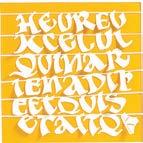
In her new book, the lettering artist Denise Lach dedicates herself to the subject of "typefaces". The starting point is a quotation, which she presents as a compact texture in a square grid. The 150 variations of this texture illustrate the huge range of possibilités of playing with typefaces.

As experimental these 150 variations on paper, textiles or printing plates are, they follow rules and can be assigned to basic design forms such as dot, line, depth, shape and contrast. Thus the typeface appears sometimes hatched, sometimes negatively cut out, sometimes rotated, hairy or in a jungle look.

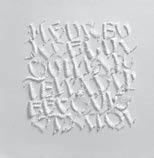


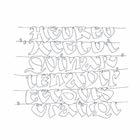
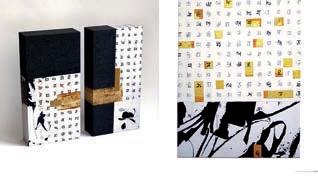
A must-have for all who love lettering, calligraphy and graffiti!

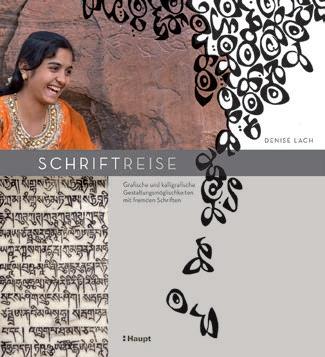
If you love typography, the alphabet of one culture will hardly be all you are interested in, for unknown symbols and shapes arouse curiosity and often enthusiasm. Denise Lach has embarked on more than one journey to the world of script. In India, Ethiopia or Tibet she has spent time documenting complex as well as simple characters, playful shapes and flashy colours which she then translated into her own visual art. Script offers great design possibilities by repeating, turning, mirroring and rotating letters, but also by experimenting with rhythms, contrasts, colours and line widths, to name but a few. In addition to calligraphic techniques, Denise Lach introduces examples from printmaking, fabric printing, collage making and digital techniques.
1. edition 2015
192 pages, colour illustrations throughout hardback, 235 x 260 mm

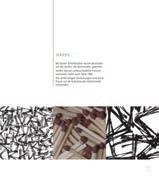

Original language: German
Rights available: world-wide, except English (world-wide) and French (world-wide)
Denise Lach

It is fascinating how renowned typographic artist Denise Lach translates photographic nature motifs into typographic images. Nature provides an extremely rich source of inspiration and we are invited to look closely in order to train our eye. When doing artwork employing script, similar to the contemplation of nature, meditative and sensual experiences flow together. More than the legibility of the script, this book values the creative freedom with which the motifs are transformed to a typeface of individual character. Besides joy and enthusiasm the play with different writing tools and script takes little previous knowledge.
1. edition 2009, 2. edition 2013
192 pages, many colour photographs hardback, 235 x 260 mm
Original Language: German
Rights available: world-wide, except English (world-wide), and French (world-wide) and Spanish (world-wide)
192 pages, many colour photographs and illustrations
hardback, 235 x 260 mm
Original language: German
Rights available: world-wide
1. edition 2021
144 pages, many colour photographs and illustrations
hardback, 170 x 240 mm

Original language: German
Rights available: world-wide
Michaela Müller and Tabea HeinickerA handwritten letter or an individual postcard conveys more than just the text: it expresses appreciation because there is something between the lines: Someone has taken the time and deliberately chosen the analogous path.



With this book Michaela Müller and Tabea Heinicker promote letter writing from an artistic point of view. The authors alternately present techniques, projects and ideas around the topic of mail art, from stencilled letter paper to calligraphed labels, from self-carved address stamps to handbound mail folders.
A must-have for all those who enjoy having mail in their letterbox.


168 pages, colour illustrations throughout hardback, 210 x 245 mm
Original language: German Rights available: world-wide, except English (world-wide)

Gelliprint
Monoprints on Paper, Textiles and Wood
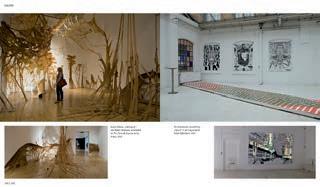




Gelliprint or gelatin printing is a creative technique that allows you to create monoprints with little effort. Whether on textiles, wood or paper, with stencils, stamps or founded objects – an endless variety of patterns and textures is possible. But what to do with all the monoprints?





Katrin Klink and Sabine Ickler go one step further by showing how to get from your experimental print to your own individual design. They not only present the most important techniques around gelatin printing, but also present the best tips and tricks as well as instructions for projects such as bags, chairs, tins, lampshades or lunch bags.
-farben, -stempeln und -schablonen. Wir haben uns für dieses Buch viele Projekte haben einen Vintage-Touch oder zeigen unsere Vorliebe für Typografie. Design, Schritt weiter vom eher planlosen experimentellen Drucken hin zu einer gewissen ProfesStoff oder Gegenständen machen, gibt es einenoder ein Kleidungsstück
ein, macht das buchstäblich ein
”Tape

This is the chosen motto by “Klebebande”, the Berlin based German artists collective. The three tape artists review the various types of tape and explain the techniques with which the tape artist can create a work of art from tape. Readers will learn how to taper lines, achieve curves or cut a negative motif. Visualized step by step in many photos, the reader will follow the creation of eleven different projects. For beginner and advanced levels alike, this book is full of inspiration for designing tape art portraits, landscapes and abstract images, as well as for decorating furniture, clothes and rooms. With a gallery of art work from Tape Artists from all over the world.
1. edition 2023
160 pages, colour drawings and photographs throughout hardback, 170 x 240 mm Rights available: worldwide
Peter BoerboomThe dot is the smallest design element, it is the first contact of the drawing pencil with the drawing surface. Most of the time we imagine it to be tiny and round, but dripped, stamped or brushed with ink it can take on completely different forms.

With pencil and brush, pen and camera, Peter Boerboom explores various themes around the dot. Origin, circle, sphere, hole, swarm or grid - his drawings and pictures illustrate the unexpected forms in which the dot can appear.

The works were created using various techniques and are provided with instructions on how to implement them, encouraging the reader to try his or her hand. Statements by well-known artists round off this work from an art-historical perspective.
In their new book, Peter Boerboom and Tim Proetel allow themselves to be guided by the line, experimenting with the possibilities of its emergence, trying out how it becomes a form and a sign, or how it suffices itself. They concentrate largely on the line on paper, because even the two-dimensional surface offers infinite possibilities. But in some places they also try out how the line can act in space.

The concept of drawing is expanded in "Lines Everywhere": Even accidental traces without creative intent, such as smoke rising from a fireplace or clotheslines, can be declared drawings.

1. edition 2020
192 pages, approx. 150 b/w and colour drawings hardback, 170 x 240 mm
Original language: German
Rights available: world-wide
Peter Boerboom and Tim Proetel




1. edition 2018
192 pages, approx. 200 colour drawings
hardback, 155 x 210 mm
Original language: German

Rights available: world-wide, except Spanish (world-wide), Portuguese (world-wide) and Russian (world-wide)
Colours are eye-catching, sensual and memorable. They adorn, soothe, touch or confuse and sometimes they even overwhelm or intoxicate us. The collection of experiments and exercises in this book invites beginners and professionals to explore the possibilities of colour, taking into account the double nature of colour: On the one hand, colour is a painting material, a substance made of pigment and binder, and is therefore watery, pasty or powdery. On the other hand, colour is an immaterial phenomenon, has an effect and is bright, variegated, muted or pastel. The real power of colour unfolds between these two poles. The material colour is blended and formed in the painting or image and is perceptible as such. As in their previous books Tim Proetel and Peter Boerboom unfold their subject in a clear visual way by using many drawings and images that make an intuitive experience.
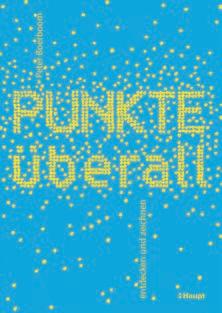

Menschen zeichnen entdecken, skizzieren, experimentieren
Peter Boerboom / Tim Proetel
8. Beugen und strecken Viele archaische Menschendarstellungen sind statisch, zeigen ein eher symbolhaftes als lebendiges Abbild. Mit zunehmendem Anspruch an lebensnahe Bilder entwickelte sich auch die Raffinesse in der Darstellung: Muskeln beugen und dehnen sich, die Wirbelsäule biegt und dreht sich, Schwerpunkte verlagern sich. Dies schafft Schwung und Spannung. Eine Schwierigkeit beim Zeichnen bewegter Figuren ist, sie mit klaren Vorstellungsbildern in Einklang zu bringen: Überschneidungen, Verkürzungen und Richtungsänderungen entstehen. Die Darstellung kann mit einer offenen, der Bewegung nachspürenden Linienführung ebenso gelingen wie mit einer konstruierenden Herangehensweise, bei der zunächst die Gelenkpunkte bestimmt werden.
Movement: Illusion on Paper


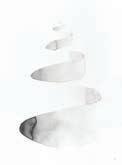


How to draw speed
1. edition 2016 192 pages, many b&w drawings hardback, 155 x 210 mm

Original language: German Rights available: world-wide, except English (world-wide), Spanish (world-wide), Portuguese (world-wide) and Russian (world-wide)
1. edition 2015
176 pages, many b&w drawings hardback, 155 x 210 mm
Original Language: German Rights available: world-wide, except Spanish (world-wide), Portuguese (world-wide) and Russian (world-wide)
Peter Boerboom / Tim Proetel
Light: Illusion Between Bright and Dark
How does Light Enter Into a Drawing?
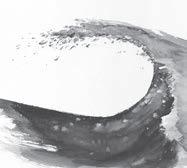
1. edition 2014
176 pages, many b&w drawings hardback, 155 x 210 mm

Original Language: German Rights available: world-wide, except Spanish (world-wide), Portuguese (world-wide), English (world-wide) and Russian (world-wide)
Peter Boerboom / Tim Proetel
Space: Methodical Illusion
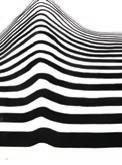
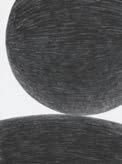
Ideas for Three-Dimensional Drawing





1. edition 2013
160 pages, many b&w drawings hardback, 155 x 210 mm

Original Language: German Rights available: world-wide, except English (world-wide), Spanish (world-wide), Portuguese (world-wide) and Russian (world-wide)


240 pages, approx. 350 colour photographs and illustrations

hardback, 215 x 275 mm
Original language: German Rights available: world-wide


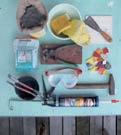


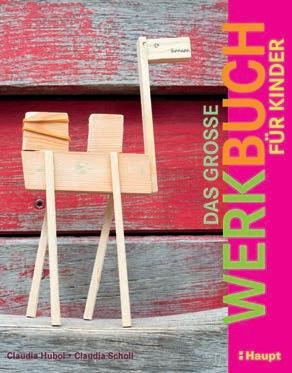
A KIDS’ PRACTICAL GUIDE TO CRAFTING is an all-round companion on the basics of hand crafting. By means of many illustrations, the fundamental techniques, materials and tools are set out to lay the necessary foundations for designing and making things with paper & cardboard, plaster & clay, yarn & fabric, wood, electrics, and recycled materials.
Ample space is given to the projects, illustrated with over 30 models. The newly acquired techniques can directly be applied to soap boxes, beach bags or mobile file cabinets. Once you have got the hang of how things work, just let your own ideas flow!
1. edition 2017
176 pages, approx. 200 colour photographs
paperback with flaps, 235 x 260 mm
Original language: German
Rights available: world-wide
Katrin Regelski

Be creative with clay, stone, plaster, paper, metal, and wood
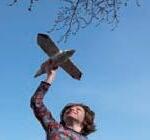


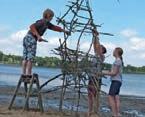
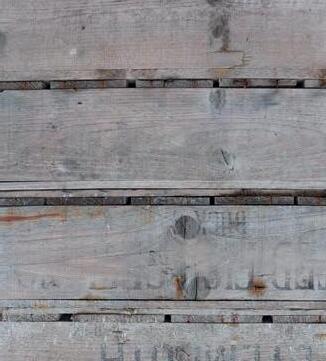
Sculptures made of natural and scrap materials, a flying object made of cardboard: Forming 3D objects is exciting and fascinating when you work with clay, stone, paste and many other natural materials and you are familiar with a few basic techniques. Katrin Regelski illustrates simple, yet artistic projects which can be mastered by children of all ages in a variety of ways. In detailed explanations she describes how to handle the various tools and materials, many of which can be replaced by things at hand or can be improvised.
Best you try it out yourself!
This book is great for making children discover the joy in painting, crafts, printing and experimentations. It is a truly inspired picture book containing lots of ideas and suggestions while at the same time also being a guide book which teaches many art techniques.
All examples in this book have been invented and made by children; the results created are mixed-media collages, crank sets made of wood, paper-made theatre stages, papiermâché islands or castles built of clay.

1. edition 2014
160 pages, many colour photographs

paperback with flaps, 235 x 260 mm
Original Language: German
Rights available: world-wide

1. edition 2022
160 pages, colour photographs throughout,hhardback, 235 x 260 mm

Original language: German
Rights available: world-wide
Antje Rittermann and Susann Rittermann present 55 new projects made of wood, all built by children aged four to fourteen.

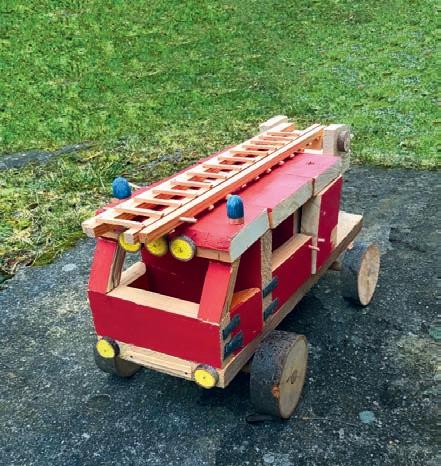
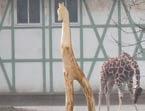
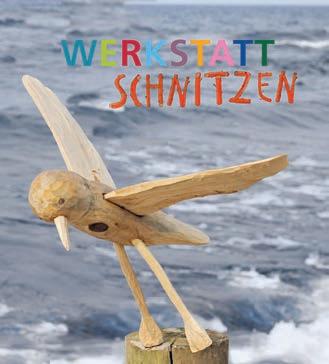
Whether it's a frog, a fire brigade, a bird feeder or a pinball machine: the projects are sorted according to their construction method. Should the object stand, hang, roll or open and close? Depending on this, it is drilled, sawn, split, threaded, an axle or a hinge is attached - or even everything together.
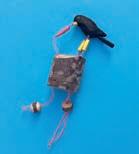


Many illustrations and photos make these techniques comprehensible at first glance, so that every child can get started right away!
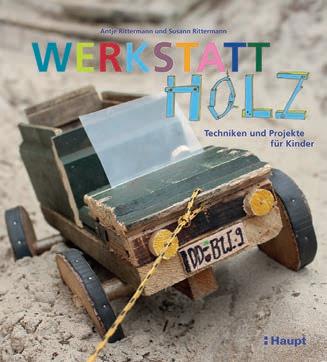 Antje Rittermann and Susann Ritterman
Antje Rittermann and Susann Ritterman
To carve a hippopotamus, a trophy or a mermaid from branches and twigs – this is fun for most children.
The two experienced authors and instructors show why wood species such as lime/ linden, birch, elder or chestnut are particularly suitable for carving and how to recognize them. In addition to the carving techniques and tips on the right knife, the design and its transfer to the wood piece is an important topic, as well as the various ways of carving faces.
Based on many step-by-step drawings, more than 50 projects are presented here: they are worked out of straight, curved and composite branches. Also, how to carve an object out of a log or how the techniques work on the relief, you learn on the basis of projects such as boxes or name badges.

176 pages, many colour photographs and illustrations
paperback with flaps, 235 x 260 mm
Original language: German
Rights available: world-wide
 Antje Rittermann / Susann Rittermann
Antje Rittermann / Susann Rittermann
Carving, rasping, sawing, drilling, nailing or sculpting – this book introduces children from the age of five to all the main woodworking techniques and tools and how to apply them. In order that the newly acquired knowledge can be tried immediately, there is a project accompanying each technique explained. Whether mermaid, excavator, boat, lion or racing car, half pipe, or rabbit, this book has it all!
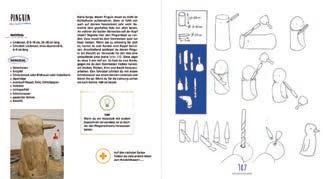

208 pages, many colour photographs and illustrations
paperback with flaps, 235 x 260 mm
Original Language: German
Rights available: world-wide, except Italian, Chinese and Spanish
208 pages, approx. 500 colour photographs

paperback with flaps, 235 x 260 mm
Original language: German
Rights available: world-wide


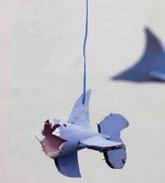


Folding, cutting, crumpling, tearing, gluing, molding, and mashing - wonderful things can be crafted with paper, cardboard or papier-mâché. Cardboard can make film scenery and let funny cardboard figures march up. With paper pulp the children will model magical sculptures and beautiful jewellery. The collection of 30 projects in this book stimulates the child’s imagination while incidentally creating a relaxed atmosphere. All "works of art" can be made at home without needing much preparation. All that is required is a quiet place, few tools, paper, cardboard, or pulp. But also remember: crafting is most fun when shared with others, being it friends, brothers and sisters, parents, grandma or grandpa, at home, in the kindergarten or at children's art school.


1. edition 2018
160 pages, approx. 350 colour photographs
paperback with flaps, 235 x 260 mm
Original language: German
Rights available: world-wide
Petra Paffenholz
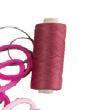
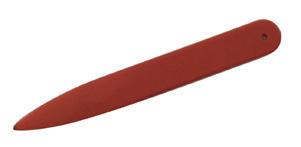
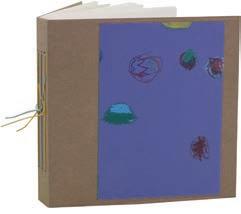
From a book made in a flash to a spy-story book

One fold and another – with a few grips, a piece of paper is turned into an accordion-folded snake. Up and down – a simple variant of the Japanese block binding makes a colourful notebook. Round and round – a cooking spoon handle serves for a spiral binding and for decorating a recipe book. Petra Paffenholz shows children how to have fun with bookbinding, creating interesting covers and original fastenings. After all, who would not like to call a spy story book with peephole for secret observations or a magical three-wishes book their own? The instructions the author gives in her book are as specific as necessary to easily master the first steps and as free as possible to leave sufficient room for everyone’s own ideas.







Lollipops, soap strips, and a concrete trophy – these and a further 50 projects using concrete, soap, and sugar are waiting to be discovered, in this book. The two authors not only explain how to build a mould and process concrete, soap, and sugar, but they also show that children from the age of five can design forms and pour objects. There is no need for a special laboratory, let alone a foundry: many of the objects shown here were created in the kitchen or garden. Spoon, bowl and microwave oven make up the most important tools. If you do not like reading instructions, just follow the drawings or turn to the ideas’ page or discover a movie on the internet via QR code.
1. edition 2015
208 pages, many colour photographs
paperback with flaps, 235 x 260 mm




Original language: German
Rights available: world-wide

144
Original language: German
Rights available: world-wide



Who would like to climb through a postcard, make a bang-slap or fold a flexagon? In her new book, Antje von Stemm reveals amazing tricks and optical illusions, objects to play with and fly through, and interesting folding phenomena. All are made of paper and have a magical surprise effect.
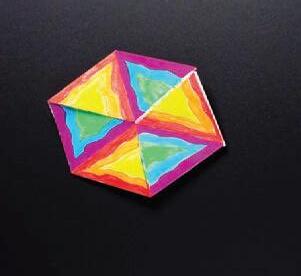
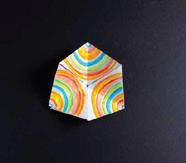

Briefly and casually, basic techniques are explained, as well as how to use a set square and cutter. And if you like, you can also watch the video that comes with the book. Most of these instructions are suitable for groups and can be implemented immediately because paper, pens and glue are usually available at home. Nothing stands in the way of paper magic!

Every child knows pop-up books, but to make such three-dimensional paper wonders yourself seems virtually impossible. What if it is less difficult than it looks?
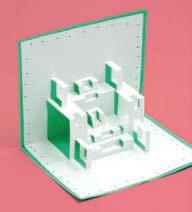




Antje von Stemm makes a unique pop-up enfold from a sheet of paper and shows all the steps leading there in detailed illustrations and photographs. Some of her examples are accompanied by short video tutorials, being great fun to watch. One of the techniques shown can make several pop-ups: a pop-up city, a birthday table or a winner’s podium for instance.

Five simple pop-ups that every child can manage form the basis of this book. These basic pop-ups are equally well suited for first experiments with groups of children.
160 pages, many colour photographs
paperback with flaps, 235 x 260 mm,



Original language: German, Rights available: world-wide, except English (world-wide) Italian (world-wide) and Spanish (world-wide)

Original Language: German
Rights available: world-wide, except Italian and Czech
Arendt
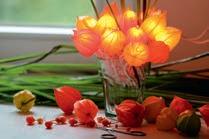



Nature offers treasures in abundance which greatly transform into personal and unique gifts: petals make wreaths, teas, and bunting; twigs make picture frames, mobiles and baskets; stones make figurines; berries make jams, preserves, and ice cream.

All 100 natural gifts presented in this book can – sometimes with a little help of adult guidance – be made by children using simple tools.
Entdecke die Farben der Natur
Das Werkstattbuch für Kinder
1. edition 2010, 2. edition 2011
158 pages, many colour photographs
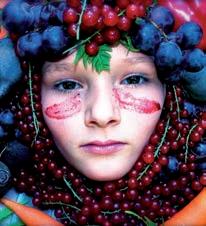
paperback with flaps, 235 x 260 mm

Original Language: German
Rights available: world-wide, except French, Italian
In der Natur gibt es viele bunte Schätze zu entdecken! Manche Pflanzen schmecken lecker, andere eignen sich besser für eine kreative Farbenwerkstatt, wie zum Beispiel die Blaubeere: Außen ist sie blau, innen besitzt sie rote Farbstoffe, die sich zum Schminken oder Malen eignen. Aber die Natur hält noch weitere Materialien für die Kunstwerkstatt bereit: Sand, Erde, Klebstoffe und viele andere einzigartige Funde.



In sieben Werkstätten zu den Themen Pflanzenfarben herstellen, Pflanzenfarben anwenden, Kleisterfarben, Sand, Erde, besondere Naturfarben und Zauberpflanzen finden sich interessante Ideen und Anleitungen zum Herstellen und Anwenden selbst gemachter Farben. Hier erfährst du, wie man aus Roten Beten die Farbe Pink gewinnt, wie aus Erde und Eigelb Erdfarben
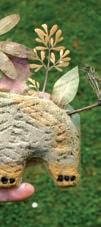
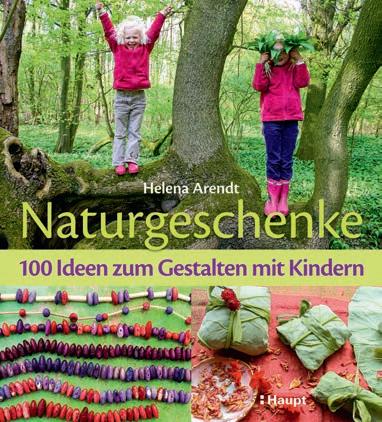


There are many colourful treasures to be discovered in nature. Some plants taste delicious, others, however, are better suited for a creative colour workshop. In seven workshops you will find out how to gain pink dye from red beetroot, how to turn soil and egg yolk into earth toned paint, how to make coloured lemonade, how to get ink from a mushroom called shaggy mane, and much more. You will make your own brushes and pens from twigs and grasses and can get going painting, splashing, dripping and squirting immediately.
Vorwort

In der Natur gibt viele bunte Schätze zu entdecken! Wenn du hinausgehst und deine Augen aufmachst, manche Pflanzen, die lecker schmecken. Du findest aber auch solche, die sich gut für Hause eignen. außen blau. Innen besitzen sie leuchtend rote Farbstoffe, mit denen du malen oder dich schminken kannst. Aber die Natur schenkt dir noch weitere Materialien für deine Kunstwerkstatt: Sand, Erde, Klebstoffe und viele andere einzigartige Funde. In diesem Buch findest du eine Menge toller Bei-
ge Säfte Malen gewinnen. Du lernst aber auch kennen, wie du die selbst gemachten Pflanzenfarben verwenden kannst. Mit Sand hast du schon im Sandkasten gespielt. Hier lernst du aber auch, wie du Sand für interesSand besondere Objekte und Figuren modellierst. gibt Malen verwenden kannst. Außerdem zeigen wir dir auch einfache Anleitungen für besondere Naturfarben, wie Beispiel Tafelkreide, Schminkfarbe oder Pflanzenkohle.
7
1. edition 2021
144 pages, many colour photographs and illustrations
paperback with flaps, 170 x 240 mm

Original language: German
Rights available: world-wide
Eva Hauck



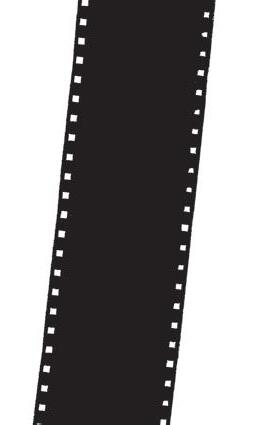






This book shows in 21 projects how images can be animated. The images often only seem to move because the eye and brain are fooled. With this book, children learn basic animation techniques. With the support of parents, this can be done from the age of 5. Older children can make their own stop-motion movie with a smartphone or tablet.
A book for kids who like to tinker and enjoy creating their own stories in pictures. Whether drawn, cut or modelled - every figure can be animated. And to make it all work, there are lots of ideas for models and backdrops, tips for stories and tricks that defy the laws of gravity.
144 pages, approx. 150 colour photographs
paperback with flaps, 235 x 260 mm
Original language: German
Rights available: world-wide
Eva Hauck / Dorina Tessmann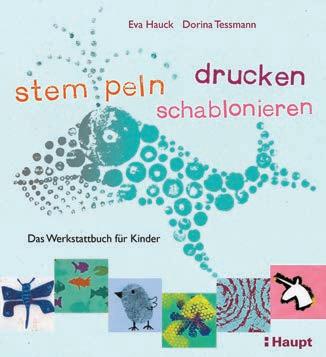
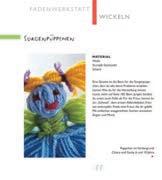
– ink blotting, stamp and roller printing, stencilling, frottage, further printing techniques, and image transfer – in 6 chapters you will become familiar with the entire spectrum of printing techniques
– mixed materials: we use buttons, lids, cords, rubber bands, foils, doilies, trims, erasers, petals, leaves, cardboard, foam, and last, but not least, your own fingertips



– simple instructions along with many explanatory illustrations on 21 printing techniques

– 28 projects to inspire children aged between 3 and 15 years
– comprehensive appendix with tips & tricks, glossary, test and certificate
– tried and tested: many objects in this book were made by children



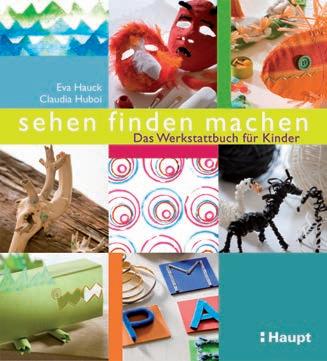









1. edition 2008
240 pages, 358 colour photographs, 18 illustrations
paperback with flaps, 235 x 260 mm

Original Language: German
Rights available: world-wide, except Dutch
Eva Hauck / Claudia Huboi”look, find, make” is a compilation of 77 projects for kids who take an interest in painting, modelling, knitting, and carving. The book takes a look at six different craft workshops and presents interesting applications of paper, paint, modelling materials, fabrics, threads, and organic materials. Be it how to invent a secret writing, dye fabrics, sew a magic landscape, carve scary monsters from found pieces of wood – solutions to these and more questions on techniques plus a vast range of suggestions for own experiments will be found in this book. This book was realised with the help of many children.

176 pages, many colour photographs and illustrations
hardback, 170 x 240 mm
Original language: German
Rights available: world-wide, except Finnish
Laura Sinikka Wilhelm
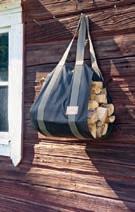

In this cool sewing book everything is about solid fabrics such as waxed canvas or upholstery fabrics made of natural fibres. These are particularly suitable for practical, hard-wearing objects such as hiking rucksacks or bicycle bags, outdoor cushions or XXL-shoppers. The experienced sewing book author Laura Wilhelm has developed 20 functional favourite objects in a trendy, reduced Nordic style, and you want to tackle them all at once. It starts with an introduction to the special features of sewing with solid woven materials and a short explanation of the basic techniques. Then you're ready to start on the beautifully illustrated projects of different levels of difficulty.
1.
191 pages, 244 colour photographs
hardback, 235 x 260 mm

Original Language: German. Rights available: world-wide, except English (world-wide)
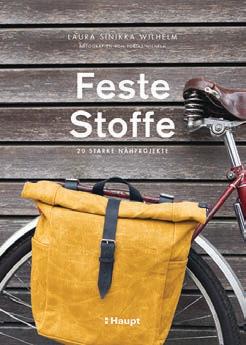 Christina Leitner
Christina Leitner

This book presents a brief history of paper textiles, and then proceeds to discuss the properties of paper fibres and how to use them. It includes projects which guide the user through knitting and crocheting, and knotting techniques. These are followed by projects using plaiting and twisting methods including basket making, and finally the paper fibres are used for weaving and decorative stitching. The book ends with an international survey of some of the world’s leading paper textile artists.
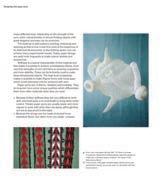

224 pages, many colour photographs
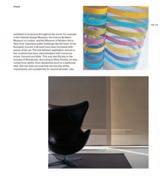
paperback with flaps, 235 x 260 mm
Original language: German
Rights available: world-wide, except Spanish (world-wide)

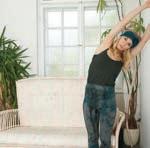
This book is a journey. Your starting point is the wardrobe and your first activity is thorough stack-taking and sorting out. Put in box three what you rarely or never use: this is the material for making your new clothes. Now, let the sewing begin and let us see where the journey leads us.
Based on 45 projects Frau Jona&son shows how old clothes can be transformed into individual fashion of high-quality design without great sewing knowledge. The instructions are accompanied by a wealth of information about eco and fair trade fashion, making this compendium more than a practical workbook.

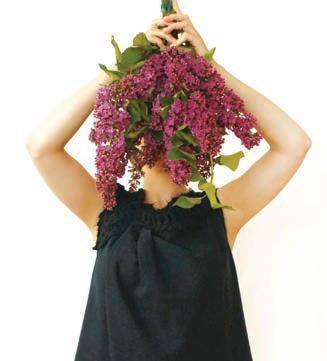
176 pages, many colour photographs and illustrations
hardback, 235 x 260 mm
Original language: German
Rights available: world-wide
Barbara Baumann and Trudi Ziegler-Baumann

Tendrils, panicles, figurines and borders – a wide variety of objects were produced in monasteries for centuries. These monastic works were signs of popular piety and for a long time they were elements of cultural creativity in the monasteries.
This book contains a plethora of knowledge and skills about the craft of monastic work and, with the help of many step by step projects, creates a new, secular approach to the traditional "beautiful works". These include beadwork, wax figures, embroidered amulets or wrapped leaf ornaments.

A lavish book that transfers the graceful and at the same time magnificent handicrafts of the monasteries to the present day.

160 pages, colour photographs throughout hardback, 170 x 240 mm
Original language: German
Rights available: world-wide
Eija KoskiA Himmeli is a pyramid-shaped mobile artfully assembled from straws and thread. In Finland it is traditionally made for Christmas, births, weddings or other eventful moments,because the delicate movements of the Himmeli signify good luck.


In her book, Finnish artist Eija Koski revives the traditional craft of the Himmeli. After providing information on the cultural context in myths and customs or in Finnish design, the author presents 30 models with step by step instructions, which show the geometric beauty of these harmonious spatial objects. Himmeli are more than just a decoration!

– –
-
Josephine Barbe / Franz KälinShoes are cultural assets. Shoes define tread and posture. Shoes are also fancy. Handmade by you yourself, they will be true favourites!
The first part of the book is a journey through three hundred years of shoe history, shoe manufacture, and shoe fashions. The second part of the book contains step-by-step instructions for making twelve attractive pairs of leather shoes. The selection ranges from ballet flats, men’s sandals to zebra-lined boots. To help you along and make sure that in the end your new shoes are truly made for walking there are expert tips, drawings, patterns, photos, and short videos which illustrate clearly any tricky steps.


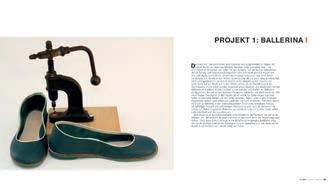
1. edition 2013
256 pages, all photographs in colour hardback, 235 x 260 mm
Original Language: German Rights available: world-wide
1. edition 2019
200 pages, approx. 400 colour photographs hardback, 235 x 260 mm
Original language: German
Rights available: world-wide, except English (world-wide)
Monika KüntiWeaving techniques are among the oldest cultural techniques of humanity. People have always needed containers to collect, carry or store something. The development of the techniques was directly related to the material available.

In her second book, Monika Künti presents a variety of weaving techniques that have one thing in common: they are woven with flat strips of different kinds of material like paper, natural materials, vegan leather etc. In addition, the objects like baskets, bags or boxes are all made of one piece, in contrast to traditional Central European baskets, which are produced using different techniques for floor, wall, edge and handle. This book is for beginners as well as for advanced basket weavers.

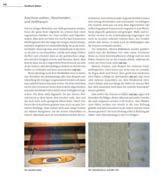
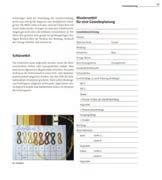

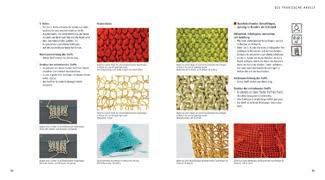

221 pages, many photographs and illustrations
hardback, 235 x 260 mm
Original Language: German
Rights available: world-wide
Monika Künti


Knitting and crocheting are extremely popular crafts. But there are much older mesh-making techniques using only yarn and fingers. The resulting structures are extraordinarily diverse and beautiful to look at. As such ancient techniques are hardly known to us today this book provides information about their history, use, nature and classification. Several techniques allow anyone interested without prior experience and with minimal tools to try their hands on crafting baskets, bags, flower necklaces, bracelets, movable modules or room dividers in beautiful materials and colours.
Erika Arndt
This book looks back on the beginnings of the art of weaving, drawing up the development of tools and techniques. The book presents the materials and appliances that are most important for weaving, introducing you step by step to hand weaving, beginning with planning the fabric, going on to loom preparation, and up to the correct progress of the work. A chapter on weave construction illustrates the most important weave structures and shows how a fabric is designed and prepared. The last part of the book invites you to reproduce samples of woven fabrics.
280 pages, many photographs and illustrations
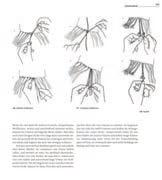
hardback, 235 x 260 mm
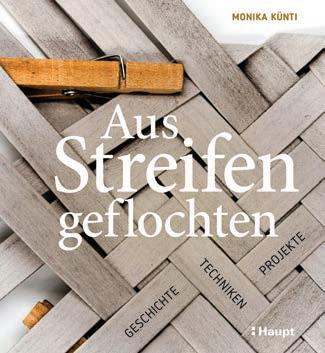
Original Language: German
Rights available: world-wide
224 pages, approx. 400 colour photographs and b/w illustrations
hardback, 235 x 260 mm
Original language : German Rights available : world-wide, except Czech






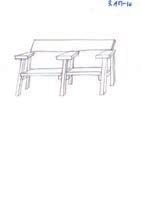





This book is about wooden benches, their construction and their location – and the story behind each bench. Because a bench is not a chair, the benches of this book are situated in public space and they are shared.

For their new book, the twin sisters Antje and Susann Rittermann photographed wooden benches in various Places in Europe and tracked down the builders of these benches. With their consent, the blueprints and instructions for rebuilding them are published in this book.
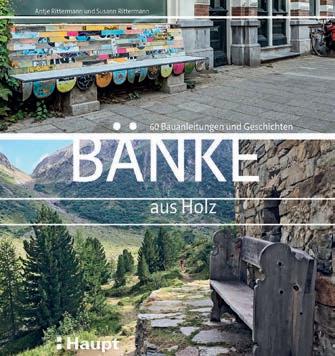
In addition to simple beach benches there are benches with armrests, benches on window sills, extremely long benches, benches to fold up and many more.
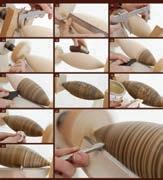


Spice rack, bistro table and hall closet - made by you yourself! Stool, bed and spectacle case, too! All such self-made items have a particular charm and something special about them while being useful and handsome at the same time. Every object tells a story, because it is made from recycled wood such as Euro-pallets, driftwood or materials rescued from construction containers. The results are unique objects inviting you to immediately unpack your tools and get going. The presented furniture is adaptable to the available space as well as to your own concepts, making the designs interesting for both beginners and advanced builders. There is no need for any fancy equipment; all objects are constructed with simple techniques and only a few basic tools. If you feel in need of some extra help, there are supplementary videos and technical tips to guide you along.

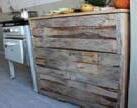
208 pages, colour illustrations throughout hardback, 235 x 260 mm
Original language: German
Rights available: world-wide, except Czech
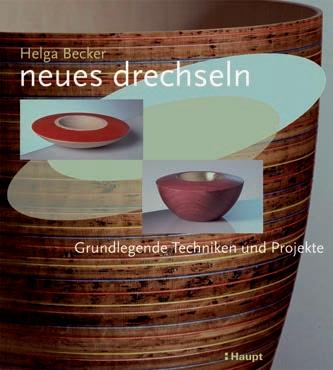
In 18 projects, ”New Woodturning” demonstrates how a classical craft is being interpreted in a modern way and proves that wood turned objects may well be of clear and cool, up-to-date design. This book introduces the reader to the traditional woodturning techniques, describing step by step how raw wooden blocks turn into beautiful and elegant shapes. Each technique is accompanied by many photographs, looking at all movements of processing through the eyes of the craftsman, thus making it also possible for the novice to follow the ins and outs shared by experienced turner Helga Becker.
1. edition 2006
182 pages, 509 photographs, 11 illustrations
hardback, 235 x 260 mm
Original Language: German
Rights available: world-wide, except Czech
176 pages, colour drawings and photographs throughout hardback, 170 x 240 mm
Rights available: worldwide
Katja FalkenburgerWood embossing is exciting because, unlike metal or paper, wood does not offer a uniform background – but instead a lot of natural design elements such as grain, cracks or colour gradients that can be incorporated into the pattern.


The focus of this book is on the techniques of embossing. If you master these, you can create your own patterns on wooden boards, branches or three-dimensional objects. With the four basic techniques, you are able to emboss exciting contours, structures or entire surfaces, and with colour and surface treatment, the spectrum is further expanded. With this book, the free artistic development unfolds one after the other, so that soon no piece of wood will remain unembossed!








There is no reason why the DIY trend should stop at jewellery. An especially suited material for jewellery-making is clay because it is versatile and natural and can be processed without difficulty. It easily lends itself to rolling, punching, modelling, stamping, painting and glazing. It is also great in combinations with many other materials: be they natural objects, wire, fabric, and leather or recycled materials. Such combinations make ceramics stand out in infinite diversity as stunning accessories.
In her book, Helena Arendt presents pieces of jewellery made in the full colour palette and in many different techniques. A separate chapter explains how to make a bracelet, a ring or a necklace from various forms of self-made clay beads or pendants. Regardless of your level of experience with working with clay, in this book you will find a great variety of suggestions for designing and creating your own individual jewellery.
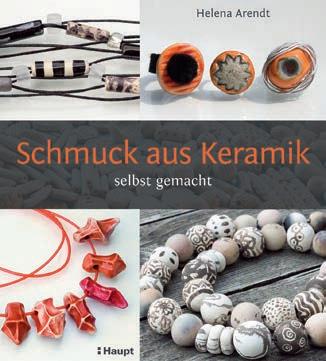

1. edition 2015
288 pages, many colour photographs
hardback, 235 x 260 mm
Original language: German
Rights available: world-wide
With the exception of the pottery wheel, Petia Knebel in this book presents an overview on basic hand-building pottery techniques, including methods of creaing coloured surface designs with ceramic engobes and glazing as well as explaining the process of firing. Based on 30 different topics oscillating between the conflicting fields of applied and fine arts, the techniques discussed are then put to use. Alongside many photos, each project is introduced by a short technical text and then worked out in detail by step by step explanations. On a gallery page, examples of other ceramic works are displayed at the end of each topic. Additionally, numerous annotations to art and cultural history are given together with references to artists and their works for further study.
1. edition 2018
192 pages, approx. 250 colour photographs
hardback, 235 x 260 mm

Original language: German
Rights available: world-wide
die als einmaliger und ungewöhnlicher Grundriss eines Vasenbodens dient. jedes Gefäß durch seine besondere Formensprache als ein Unikat auszeichnet. Mithilfe der Plattentechnik wird diese Art von Vasen aufgebaut. Ästhetische Grundsätze wie die Folgenden formuliert werden: Wie viel Wasser benötigt eine einzelne
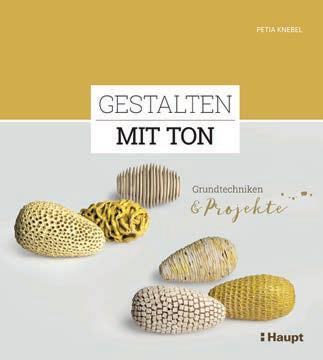
1. edition 2010

232 pages, many colour photographs
hardback, 235 x 260 mm
Original Language: German
Rights available: world-wide
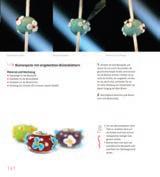
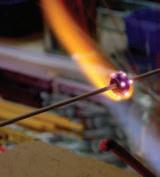
This book covers all you need to know about manufacturing glass beads: historical background, how to set up your own workplace, health and safety issues, and, of course, many step by step introductions to different techniques for fabricating your own glass beads. The author shows how to mix your own paints, how to achieve complex patterned glass rods or how to decorate beads with glass frits or enamel.

All techniques are illustrated by detailed photographs and are accompanied by finished pieces of jewellery offering inspiration for your own glasswork creations.
1. edition 2002, 2. edition 2008,
3. edition 2013

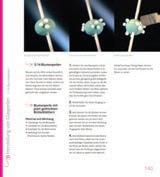
256 pages, 353 photographs, 46 diagrams hardback, 235 x 260 mm
Original Language: German
Rights available: world-wide, except French (world-wide)
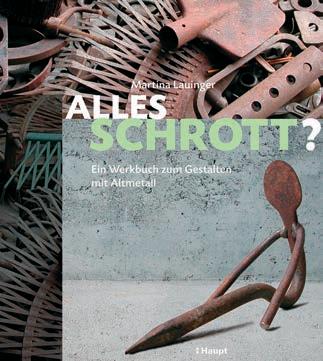 Martina Lauinger
Martina Lauinger
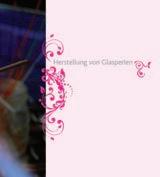
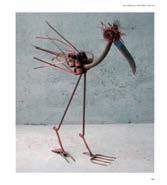

What at first may seem like nothing but junk can turn out as valuable substance for creating art. With a lot of beautiful illustrations and photographs showing metal-works from different artists, this book provides a lot of technical information as well as attractive projects and inspirations for everybody.
1. edition 2014
160 pages, many colour photographs
hardback, 235 x 260 mm
Original Language: German
Rights available: world-wide
Alexander SchwarzIn sculpting, art and handicraft affiliate in a unique way: the work with stones requires a lot of exercise, know-how, and experience as well as good ideas, creativity, and artistic skills. But sculpting is nonetheless an art that can be learnt. An invaluable help are this book’s step-by-step explanations of the basic techniques, its informative photographs and helpful tips of the author as well as the movies provided on the internet (www. haupt.ch/steinbildhauerei).
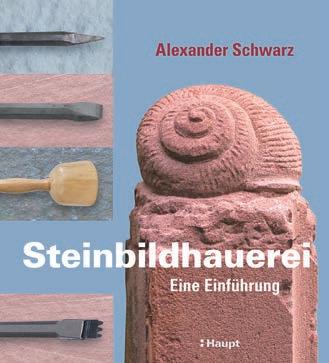


Johann Brandstetter
Butterflies – The Postcard Book
Denise Lach
Calligraphy – The Postcard Book
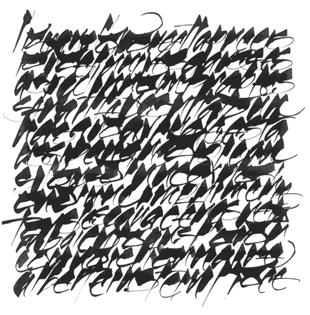

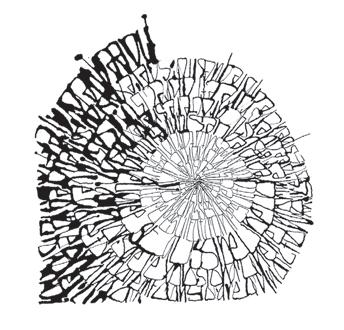

1. edition 2019
Original language: German
Rights available: world-wide
Denis Sonney
Flora amabilis – The Postcard Book

1. edition March 2020
84 pages, 40 postcards to rip out hardback, 120 x 165 mm

Original language: German Rights available: world-wide


1. edition 2019
Original language: German
Rights available: world-wide
Gustav Pfau-Schellenberg
Old Apple and Pear Varieties –The Postcard Book
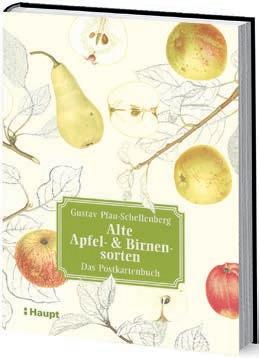
1. edition 2019
Original language: German
Rights available: world-wide
The Postcard Books are a collection of 40 images taken from selected publications.


At least one tree is a must in every garden!
Brunhilde Bross-Burkhardt
rer. agr., is a specialised and editorial journalist, editor and author of more than 40 books and travel guides. In addition to her work as a lecturer in adult education, she has also been imparting her botanical knowledge to a wide audience as an excursion and course leader for decades.
Brunhilde Bross-Burkhardt
The Right Garden Tree – Climate Resistant and Climate-friendly
approx. 176 pages and 150 photographs,
paperback with flaps
format: 155 x 225 mm
publication date: September 2023
rights available: worldwide
At least one tree is a must in every garden. Trees provide coolness and shade, improve the air, are a habitat for many animals and have a stabilising effect on the climate. A garden rich in trees is desirable not only for ecological reasons. With the knowledge of growth characteristics and site requirements of the woody plants, gardens can be designed in an exciting way.
The author focuses on heat and drought tolerant native species –supplemented by climate resistant species and varieties from other regions of the world. Robust fruit trees are also included. Design examples with shrubs and perennials thriving in the shade of trees and gardening practice complete the book, which is enriched with a lot of experiential knowledge.
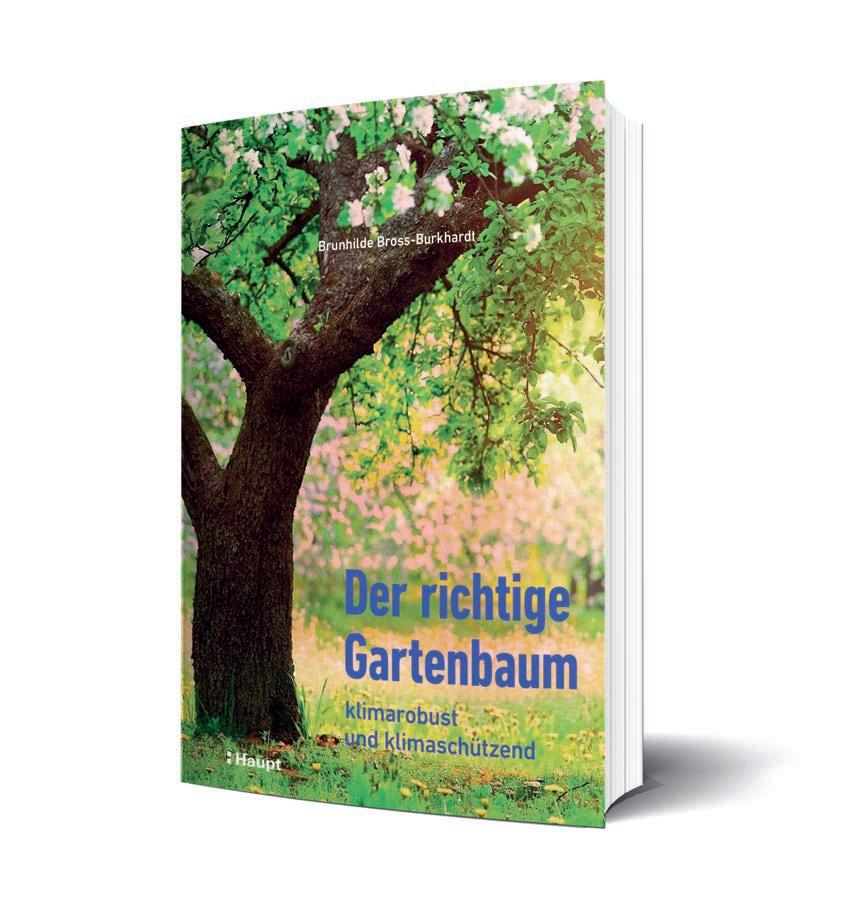
Dominik Erdmann is an archivist, literary scholar and historian of science and technology. Since 2007 he is cata loguing and researching the estate of Alexander von Humboldt.
Stefan Brönnimann is Professor of Climatology at the Oeschger Centre for Climate Change
The Beginnings of Modern Climate Research
approx. 240 pages,
80 colour illustrations and graphs
hardcover
format: 195 x 235 mm
publication date: October 2023
rights available: worldwide
Even though Alexander von Humboldt was a meteorological autodidact, today he is considered the founder of modern climatology. In his life's work “Cosmos” he laid down a definition of climate that has endured to this day.
But how did Humboldt arrive at his views on the world's climate and who else was involved in its discovery? Answers to these questions can be found during a visit to Humboldt's “weather studio” at Oranienburger Straße 67 in Berlin. The authors take a look at his scientific legacy, his collections on the cosmos, and show how he created our views of the world's climate with the help of pen and ink, scissors and glue.

How Humboldt's survey of the world laid the foundation for modern climate research
Peter Baccini is Professor Emeritus of Resource and Waste Management at ETH Zurich. With his research team, he mainly dealt with the resource balance in densely populated regions. Peter Baccini was also President of the Swiss Academy of Sciences (SCNAT) from 2001 to 2006.
Peter Baccini Domestication of Earth Overexploitation, Waste, Thrift. Our Use of Resourcesapprox. 240 pages, 40 illustrations
hardcover
format: 170 x 240 mm
publication date: September 2023
rights available: worldwide
Since humans became sedentary, they have slowly increased their demands on the amount of water, land area, food, energy sources and building materials. Only in the last two centuries, with the exponential growth of their resource budgets, have they become the most important geological actor. It is the story of the self-made resource trap. This book also presents the attempts at correcting negative side effects, sometimes successfully, sometimes not. Peter Baccini argues that humans have the technical and economic capacity to extricate themselves from this “resource trap”. To this end, he presents his theses for a resource policy that is necessary for this.

mm
Original language: German
Rights available: world-wide




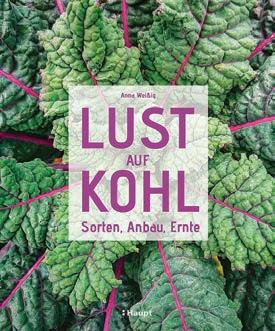

Collard greens, cabbages, and mustards with their colourful and richly shaped varieties are still an underestimated winter vegetable. And even in summer, the genus Brassica has more to offer than meets the eye. In addition to general explanations of year-round cabbage cultivation the author introduces the various cabbage species and portrays more than 100 varieties. She provides information on plant needs and how to deal with common cabbage pests and diseases.
240 pages, 328 colour photographs
hardback, 215 x 275 mm
Original language: German
Rights available: world-wide
Tomatoes are really easy to cultivate. With this book, growing your own tomatoes is an exciting adventure. Ute Studer visited tomato pioneers in Germany, Croatia, France, Austria and Switzerland and asked them for their insider tips on cultivation, care and propagation. The favorite varieties of these tomato experts are revealed in this book and presented with many impressive photos. From all the conversations, the author has developed a cultivation method, which is presented in the last chapter. Even if the garden is very small or only the balcony is available: Everybody will find some suitable advices.

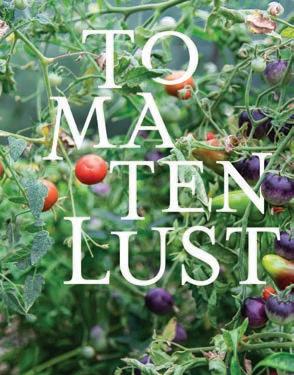

256 pages, more than
400 colour photographs
hardback, 195 x 235 mm
Original language: German
Rights available: world-wide
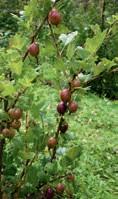

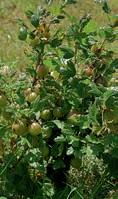

Worshiped by few, tolerated by some, rejected by many. Gooseberries are uncomfortable in cultivation, but they are the richest in species of all berries. The present work will be the first monograph on known, but also on unnamed gooseberry varieties. The color richness and variety of forms is presented in 101 detailed variety descriptions with photographs. Important general features and pomological aspects are explained and illustrated with schematic drawings.
195 x 235 mm
Original language: German
Rights available: world-wide
Katrin Hecker, Frank Hecker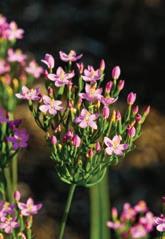
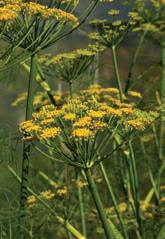
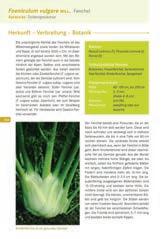
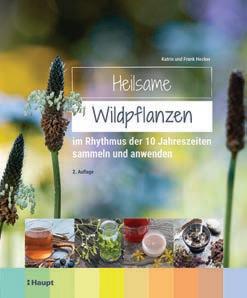

Nature offers us lots of useful things. The authors have assembled centuries-old knowledge and invite us to join them through the ten seasons of the phenological calendar into the habitats of these fascinating plants: Find out what meaning many of them had thousands of years ago and what modern research has to say about their ingredients today, how you recognize the plants, how you can collect, prepare and preserve them.
360 pages
338 colour photographs
paperback, 155 x 225 mm
Original Language: German
Rights available: world-wide
Thomas Pfister et al.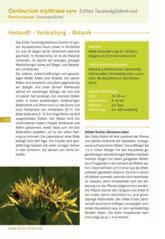
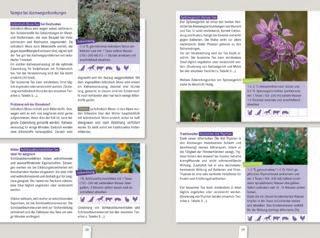

Grow your own medicinal plants: Some plants possess powerful medicinal properties for all sorts of illnesses and injuries. This book introduces about 50 medicinal plants, as for example marigold, dandelion and ribwort, and provides a wealth of information on cultivation, gathering, processing and cooking.
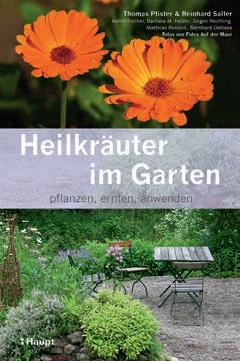
248 pages, approx. 280 colour photographs
paperback, 155 x 225 mm
Original language: German
Rights available: world-wide, except French
Cäcilia Brendieck-Worm, Franziska Klarer, Elisabeth Stöger

Our pets and farm animals can have various problems and disturbances as overweight, skin diseases, gastrointestinal disturbances, joint problems or allergies. Three experienced veterinarians have collected traditional medicinal plant knowledge that provides viable treatments for many ailments.

286 pages, approx. 220 photographs and illustrations
Original language: German
Rights available: world-wide, except French
Christoph Bachmann, Eva Bührer, Kurt Forster Permaculture Principles and practical examples on organic gardening


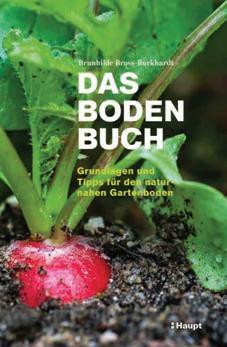
A garden for self-sufficiency, vegetables from the balcony, urban community gardening, or agricultural production – permaculture can be realized in diverse ways. The idea behind it is simple enough: If we care for nature, nature will care for us. The book presents the basics of permaculture and, based on ten principles, displays permaculture elements and functions. The development of a permaculture system is easily and clearly explained, and you are shown and explained step by step how initial ideas turn into a plan and practical implementation. Furthermore a number of practice examples are provided.
UMSETZUNGEN, IDEEN, 1 in der Natur beobachten, Naturabläufe nachahmen, tersprache der Natur verstehen, achtsam die Ver¶2 ERMÖGLICHEN Monokultur, geschickte Artenabfolge, Vielfalt anten, Beziehungen und Ernten fördern, räume schaffen, auf eine ¶ 3 FÖRDERN neuen Erkenntnissen,gen, Bedürfnisse der Menschen einbeziehen, jedes Element erfüllt mehrere Aufgaben – jede erfüllt,hung zueinander, ergän¶ die vielfältigen Funktio4 chene Ökosysteme schaffen, sukzessionale AgroUmgebung angepasste mehrjährige Systeme ¶ reagieren können auf Verheit, Hagel, Kälte, Schädlinge durch Vernetzung,5 speichern, bestmögliche Energienutzung wie SonGewächshaus, Teich, Steine, kurze Wege, ¶ nergie ZEHN PERMAKULTURGRUNDSÄTZE 72 73 Zum Beispiel das Hügelbeetbeet erfolgen. Im Herbst oder im Frühling wird mitRasenziegeln,LaubundGrobkompost.Darüber wird der ausgehobene Humus geschaufelt. So den unteren Schichten rasch eine gewissetung des Hügelbeets in Nord-Süd-Richtung liegt, Auf den steilen Seitenflächen des HügelbeetsWärme aufnehmen und speichern. Das Pflanweniger lang liegen bleibt als auf einem flachen ersten Jahr am größten, da Rasenziegel und etwas Wärme.Höhe rund sieben Jahre fruchtbar bleibt, eingesetzten Materialien entscheidend für die ist nur noch eine kleine Erhebung sichtbar.Holzspäne aus der ten eingebaut aufgebautes Hochdes Hügelbeet
256 pages, approx.
hardback, 195 x 235 mm
Original language: German
Rights available: world-wide
1. edition 2017
192 pages, approx. 230 colour
hardback, 155 x 225 mm
Original language: German
Rights available: world-wide, except French
Kranz, Frederik Deemters Permaculture Food Forest A Practical Guide





Volker
Dynamik und Systemverständnis zerlegen, ginge ein wesentlicher Aspekt des Waldes bereits in der Landwirtschaft geschehen: Die vormals gut funktionierenden Systeme der kleinbäuerlichen Spezialisten bewirtschaftet: Obstbau, Tierzucht, Getreidebau, Gemüsebau und Teichwirtschaft. Die
TIPP Permakultur
Nachdem ich mich als Landschaftsgärtner, poli-
hängen beschäftigt hatte, suchte ich nach einer Landschaften planen und gestalten lassen. Hierbei stieß ich auf die damals noch junge Idee dervid Holmgren hatten in den 1970ern den Grundstein für eine Gestaltungsmethode entwickelt, diener nachhaltigen Landwirtschaft zu gelangen: die «Permanent Agriculture» – also «dauerhafte LandÖkosysteme entwickelten sie eine Planungsstra-
überzeugte mich diese Idee sofort – denn ihr Ziel
tung verbinden und zu einer konkreten Umsetzung
Brunhilde Bross-Burkhardt
The Soil-Manual
einzelnen Elemente, die einmal ein System bildeten, Genau dies passiert auch, wenn wir uns den Anbau von Obst, Nüssen und Kräutern als Plandie monotone Pflanzung bietet wenig Lebensraum
unter anderem darin, dass es sich dynamisch entwiist. Wir können aber z. B. im Geländedesign dafür sorgen, dass das System entwicklungsfreudig herstellen. Wenn wir von vorneherein ein Gelände windstillen, schattigen und sonnigen, trockenen und feuchten Orten – herstellen, wird die Anzahl unweigerlich größer sein als bei einem strukturarmen GARDEN & ENJOYING NATURE
Gestaltung und Erhaltung von landwirtschaftlich produktiven Ökosystemen, die die Vielfalt, Stabilität und Widerstandsfähigkeit natürlicher Ökosysteme aufweisen.» (Mollison 1988) Die Permakultur ist also keine Anbaumethode,tungsansatz hilft uns auch bei der Planung von Waldgärten, die hier stattfindenden Abläufe undsichtigen. als der «Alternative Nobelpreis». Mittlerweile hat
staltungsmethode entwickelt, die auch Forstwirtund Bildung miteinschließt.
The soil is the basis for gardening. Even though the soil is so self-evident, we generally have just a smattering of knowledge on it. There are different types of soil. Which soil type is best for which plant? What’s living in it? How can you test the soil by yourself? How can you improve the soil and make it more suitable for your vegetable garden? What are the best amendments to use for your soil? Why types of mulch are there?

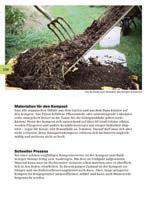
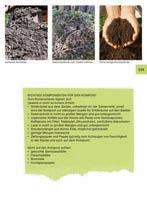
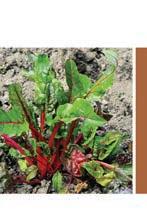
240 pages, colour photographs and illustrations throughout hardback, 195 x 235 mm
Original language: German
Rights available: world-wide
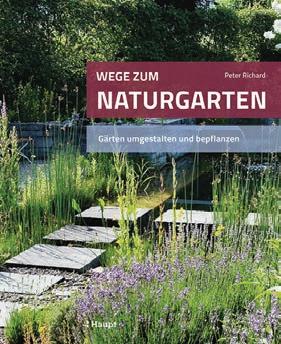
Flower meadow instead of lawn, wild hedges instead of exotic ornamental shrubs, gravel and crushed stone instead of concrete: there are many ways to make your garden more natural and a habitat for various plants and animals. But it is not always easy to turn the ideas into a harmonious and suitable whole for your garden.
Based on various before and after examples taken from his garden practice the renowned garden designer Peter Richard shows, how boring, monotonous gardens can turn into natural paradises – from the initial situation to the concept and to the implementation.


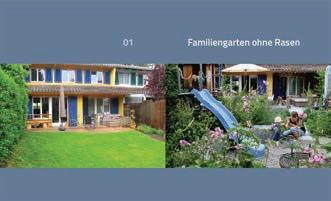


Natural gardens don't have to be wild and messy. The author, a landscaper and natural garden specialist, shows how native flowers, shrubs and trees can be used to create a deliberately designed yet natural garden paradise. He explains which plants feel at home next to each other and where they thrive and prosper, which points to bear in mind when buying and transporting the plants – and how to plant and cultivate them properly. With helpful planting sketches, numerous ideas for semi-natural plant compositions and detailed plant lists.
1. edition 2020
256 pages, 200 colour photographs and illustrations throughout hardback, 235 x 260 mm
Original language: German
Rights available: world-wide
Wildromantische
1. edition 2018
256 pages
350 colour photographs and 94 illustrations
hardback, 235 x 265 mm
Original language: German
Rights available: world-wide
Peter Richard





A natural garden does not necessarily have to be a chaotic wilderness and native flora, materials tested for sustainability, and much respect for the needs of both humans and animals alike can combine very well with elegant garden design. This is the book’s motto set up by Peter Richard, professional planner of nature-inspired gardens. His book offers guidance and inspiration for near-natural gardens from the initial garden concept to the precise planning and preparations, up to the practical construction of paths, animal-friendly walls and stairs, as well as garden houses and ponds that please animals as much as humans.












Choose winter coloured plants, grow food, think nature!





The winter garden has aesthetic attractions – many shrubs and trees have colourful branches, textured bark, or winter flowers. Berry shrubs not only bring colourful berries to your garden in winter, they also provide food for birds and other animals.
Many ornamental grasses and other plants have interesting seed heads that will – if you avoid cutting them back – add dimension to a winter landscape. They will also provide food for birds and other wildlife.

Because the weather has gotten chilly doesn’t mean you can’t still grow things – a wide range of winter vegetables allows you to extend the season.
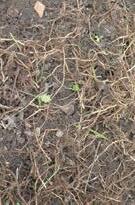
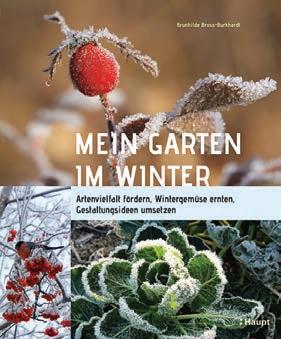


192 pages, approx. 290 photographs hardback, 195 x 235 mm









Original language: German
How to have fun and enjoy your garden despite the lack of time: that’s the main issue of this publication. By good planning, suitable plant selection and restriction to the essentials, the effort for the garden can be kept low. Although being close to nature and the responsible use of resources are very important to the author.
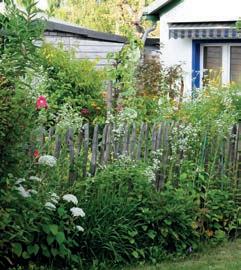
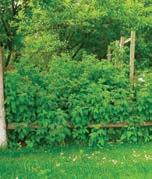
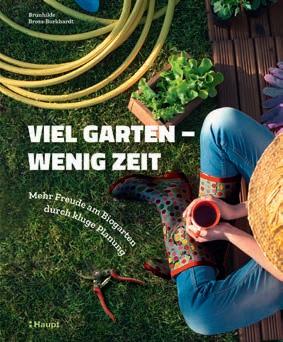
nur noch wenig Zeit aufwenden kann, ließ ich die Erdbeeren einfach ranken. Die oberirdischen Ausläufer mit den Kindeln wurzelten dort, wo sie auf dem Boden aulagen. So ergab sich zunächst eine Art Erdbeerwiese mit dicht stehenden Planzen. (Ähnlich verhält es sich bei der Erdbeersorte ‘Florika’, die deshalb unter der Bezeichnung sporadisch den Garten aufsuchte, mit Wasser. In vielen Jahren ist das nötig, wenn es in der Phase der Fruchtbildung nicht genügend regnet. Da musste ich also mit der Giesskanne nachhelfen. meinem Hausgarten auf das Erdbeerbeet gelangt waren. So präsentiert sich das ehemalige „Erdbeerbeet“ heute als buntes Blumenbeet mit Kronen-Lichtnelke, Magerwiesen-Margerite, Mutterkraut, Wiesen-Schafgarbe, Johanniskraut, Leinkraut und Weißklee viele und große Früchte ernte ich von den Planzen, die am unteren Rand hinter einem Mäuerchen stehen, weil diese am Fuß des leicht abschüssigen Beets am besten mit Wasser versorgt sind. Das macht sich an der Anzahl und an der Größe der Früchte die Kultur-Erdbeere mit der Wald-Erdbeere nur weitläuig verwandt ist. Sie hält sich in dem doch recht dichten Bewuchs mit sie beschattenden Planzen gut. Das mag auch daran liegen, dass unter dem Schattendach weniger Wasser aus dem Boden verdunstet
192 pages, approx. 230 colour photographs




hardback, 195 x 235 mm
Original language: German
Rights available: world-wide

Lob des Unkrauts
1. edition 2015
208 pages, 330 colour photographs
paperback, 155 x 225 mm

Original Language: German

Rights available: world-wide, except French
Brunhilde Bross-Burckhardt
Rambling weeds are an annually recurring evil for most gardeners. This book shows that it doesn’t have to be this way! With insightful information about distinctive features, appearance, usage, and regulation, the author introduces more than 60 wild growing plants that don’t have to be fought but can be used as medicine, for cooking, or for mulching the garden.
Gierschgeplagte Gartenbesitzer gewinnen der Wildpflanze eine positive Seite ab, indem sie die jungen, noch
Bekämpfung entsprechend günstige Bodenverhältnisse abzuwarten. Mit einem Jätdurchgang ist dem bleiben trotzdem kleine Stücke zurück, die Was tun? In solchen Fällen verspricht eine andere Regulierungsmethode mehr Erfolg: großflächiges Mulchen mit einer dicken Lage durchlässigem Unkrautvlies oder Folie. Durch den Lichtentzug kann sich kein Blattgrün entwickeln, wodurch der Giersch allmählich geschwächt und zurückgedrängt wird. Allerdings kann es passieren, dass der Giersch die Barriere unterwächst und am Rand der
224 pages, 200 colour photographs
hardback, 170 x 240 mm
Original language: German

Dirty hands, naturally grown plants and a wild sea of flowers - all this characterizes Slowflowers from ones own garden. Photographically accompanied by Grit Hartung, Slowflower entrepreneur Chantal Remmert shows a year in her garden in Leipzig. The practical DIY's and numerous tips, from sowing to harvesting cut flowers, are suitable for garden beginners and flower lovers. Clear step-by-step instructions explain sustainable techniques for tying fragrant bouquets and putting together stunning arrangements.
Slowflower-Bewegung e.V. The Slowflower Movement Sustainable Flower Cultivation – People and Stories










Tipp von Erna Primula
1. edition 2022
photographs
hardback, 215 x 275 mm
Original language: German
Rights available: world-wide
192 pages, approx. 250 photographs
paperback with flaps, 155 x 225 mm
Original language: German
Rights available: world-wide
wechseln. In Parkanlagen sieht manter-Spindelstrauch Euonymus forGARDEN & ENJOYING NATURE


Erna
PRIMULA Slow Flowers 13 DIE LANDSCHAFTSARCHITEKTIN Chantal Remmert gruendete Erna im Jahr 2016 in Leipzig. Der Traum nachhaltigen BLUTENSCHMUCK ZU PRODUZIEREN wurde langsam Wirklichkeit Seit 2018 werden die eigenen Blumen in der dazugehorigen Gaertnerei angebaut. Hochzeiten Fotoshootings, Slowflower- Leipzig (D) Hier steht ein Lauftext mit ca. 4700 Zeichen Die studierte Landschaftsarchitektin Chantal Remmert gruendete Erna Primula Blumen Studio im Jahr 2016 in Leipzig. Der Traum nachhaltigen Bluetenschmuck zu produzieren wurde langsam Wirklichkeit. Seit dem Jahr 2018 werden auf ca. ha Flaeche die eigenen Slowflowers in der dazugehoerigen Gaertnerei angebaut.Inzwischen werden dort ueber 300 verschiedene Blumen-Sorten auf ca. 50 kleinen Feldern, im Gewaechshaustunnel und Gewaechshaus kultiviert. Ein Schwerpunkt der Blumenauswahl liegt in der individuellen Gestalt der Pflanze sowieschiedlichen Workshops, wird das Wissen rund um das Arrangieren, das Naturprodukt Blume und deren Anbau weitergeben. Iciam re ad modigniaessi qui am, secae. Obitat est que landia doluptatem aspel issit quiat ene poressequo modi aditatio corerit unt. Git rati qui quae non ra sum videl ma volecte molorep eligenducium audae sandit lab illiquo excerferae eum hit erestia voluptatur aut quatisit ese offici volorio imint ut ute et alicab in plis aspernam dolor soloris quunditas eostet et, con conseni hitiae ma quunt odionecerisi
Bruno P. KremerSTECKLINGE ziehen zusammengestellt.
2150 Zeichen… Stecklinge schneidet man am bes-gen eher ein freundschaftlicher Akt als ein Dieb-schenkte. Der Steckling kommt in einen Behaelter mit Wasser. Vorzugsweise sind sie fuenf bis zehn Bluetenknospen. genau unter einer Blattnarbe. Fuer den Transport einen Behaelter mit Wasser. Eine aus einem Steckling gezogene Pflanze erinnert noch lange an den zu entwickeln beginnt, pflanzen Sie ihn in einen Topf, den Sie mit einer Mischung aus Kornposterde -
sam und stuelpen Sie einen Plastikbeutel ueber den Topf den Sie mit einem Gummiband sichern.Sie darauf, dass die Komposterde nicht austrocknet –ze geworden.Am einfachsten lassen sich «Weichhol»Stecklinge grossziehen. Das sind junge Triebe mitmer mit einer sauberen Schere abschneiden sollte. Der Steckling kommt in einen Behaelter mit Wasser.ten Sie darauf, dass die Komposterde nicht ausjunge Pflanze geworden.Am einfachsten lassen sich «Weichhol»-Stecklinge grossziehen. Das sind Fruehjahr oder Sommer mit einer sauberen Schere abschneiden sollte. Der Steckling kommt in einen
16 Erna Primula
meesciet ipienecusam saerit miliquo magnis por sit aut optae velesedia consecta dolut milleni atenimpore conse re peritioribus doluptatiis pa coneces edignih itiaes modis pore rest, sum est ere pro ea comnim faccupt errum fugianiam echshaustunnel und Gewaechshaus kultiviert. Ein Schwerpunkt der Blumenauswahl liegt in der individuellen Gestalt der Pflanze sowie Gewaechshaustunnel und Gewaechshaus kultiviert. Ein Schwerpunkt der Blumenauswahl liegt in der individuellen Gestalt der Pflanze soluptatibus alique sitibuss. Es moluptaerci ut ab invenet, quatur� Quiant laut facidem doluptam eum faccum quame nia nullist enden auf ca. 50 kleinen Feldern, im Gewaechshaustunnel und Gewaechshaus kultiviert. Ein Schwer
« Ein Garten voller Blumen, das macht mich gluecklich. »
Balkon, Garten oder Schrebergarten zu-



Slow Flowers 17




Many poisonous plants are extremely decorative and easy to care for, which is why numerous poisonous spieces have found their way into our gardens as ornamental plants. As long as one knows about the potential danger of these species, and behaves accordingly, these plants are an asset in the species-rich home garden. This book profiles the most important species of Central Europe and provides detailed information about their appearance, where they occur, their toxic contents, and possible confusion with other plants. In addition, the author provides practical gardening tips and information on which animals in the garden particularly benefit from the plants.
Pfaffenhütchen, Gewöhnlicher Spindelbaum, jedoch nicht unbedingt als Genuss-che Gefahrenpotenzial überschaubar. Terpen-Alkaloid Daphnetoxin, in den
der Lorbeer-Seidelbast Daphne laustreng geschützt. Gartentierbonus von Bienen und Faltern besucht und Blühtermins wertvoll. Singvögel (RotGrasmücken) haben mit dem Gift
Aussehen
ter Kleinstrauch,
-
nerischen Umgang können Hautirri-
Die Giftwirkung nach dem Verzehr
Baum, dicht und sparrig verzweigt, etwas kantig, mitunter mit schmalen gestielt, 5–8 cm lang und 2–3 cm kahl, glattrandig oder wenig gekerbt, karminrot. reif karminrot. Samen groß, weißlich, kontrastreich orangeroten Samender geöffneten Kapsel eine Weile Kronen eher unauffällig, 4-zählig, grünlich, um cm breit, lang gestielt, zu 3–9 traubig in den Blattachseln, Besucherinsekten enorm anziehend. Vorkommen Feldgehölze, Wald- und Wegränder, 0,4–1,5 m hoch. Zweige rutenförmig und biegsam. Triebe und Zweige dicht mit kleinenständig, kurz gestielt, an den Zweigenden büschelig gehäuft, 3–8 cm lang, länglich-lanzettlich, stumpf oder leicht zugespitzt, oberseits leb-grün oder bläulich. Geschützt. Alle Blüten Die Blüten erscheinen geraume Zeit und angenehm, sitzen zu je büschTriebe. Die Krone fehlt, stattdessen-
Gewöhnlicher Seidelbast Blütezeit: Februar–April
Steinfrüchte erbsengroß, korallenrot. Schattige Gebüsche und Laubmischwälder, bevorzugt auf kalkreichen Böden. In EU weit verbreitet, vor allem im höheren Mittelgebirge, in den Alpen bis 2000 m, fehlt im Tief-
-
Verwechslung-lungsgefahr. Verwandte und in ihrer Arten sind die alpin verbreiteten und Rosmarin-Seidelbast
bleme die reifen Früchte finden Der Seidelbast ist der Blüte eines der spektakulärsten heimischen Strauchgehölze und vor allem angenaturnahen Ziergarten. Größere Garbis gar nicht. Sicherheitshalber nur sind hochgiftig. Besonders gefährlich
224 pages, approx. 400 photographs
paperback with flaps, 155 x 225 mm
Original language: German
Rights available: world-wide
Norbert GrieblThings have changed in recent years: temperatures rose, rainfall became more intense, growing seasons longer. We need to adapt to these new conditions. Above all, the right choice of plants is important to a long-lasting and durable garden. The author presents 100 plant species that will defy climate change or will cope in Central Europe precisely because of this change. He provides information on the needs of the plants and gives additional information on the benefits for wildlife.

232 pages, more than
500 colour photographs
paperback with flaps, 155 x 225 mm
Original language: German
Rights available: world-wide
Norbert Griebl

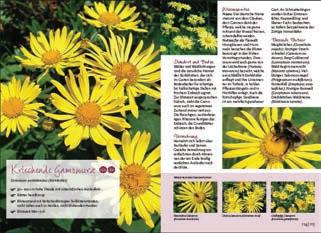
This book presents the 100 best native plants for naturalizing in the garden – plants that don’t remain tamed at their small place, but move and spread in the garden – describing their dispersal strategies (by self-seeding and by roots and sprouts) and informing about their needs, so that they can grow and flourish, and also showing ways to tame the very wild ones in order to maintain the diversity. With additional information on the plants use for cooking or on their benefits for wildlife.


336 pages
378 colour photographs
paperback, 155 x 225 mm
Original Language: German
Rights available: world-wide
Norbert GrieblEcologically sustainable gardens are veritable hotspots of biodiversity, providing food and shelter for countless animals while serving as a haven for plant species unable to survive in our monocultures. In 140 portraits of plant species, this book shows how to preserve and extend the ecological diversity in the garden.
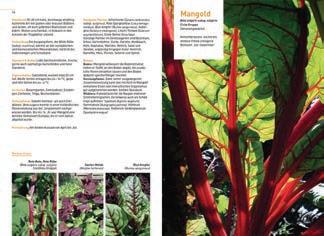

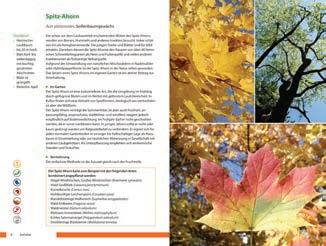
1. edition 2023
192 pages, 270 colour photographs, 80 illustrations
Original language: German
Rights available: worldwide
Richard Wymann
Gardening with Sun, Wind, and Weather Planning, Cultivation, and Care in Natural Garden





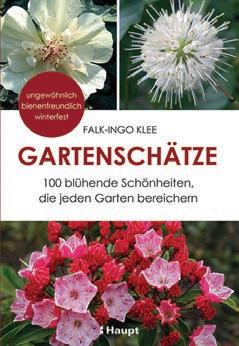
1. edition 2023
208 pages, colour photographs and illustrations throughout hardback, 195 x 235 mm

Rights available: worldwide
1. edition 2023
144 pages, approx. 110 colour photographs
Original language: German
Rights available: worldwide
Physikalische Windeigenschaften am Beispiel einer Hecke verstehen ihnen erkennt man die Hauptwindrichtung. Sie können uns wertvolle Hinweise für die Gartengestaltung 1.2 Sogwirkungen Je nachdem, in welchem Winkel der Wind auf ein ObObjekt. Je nach Umständen kann dadurch auch eine verankert ist, weggerissen werden. Naheliegenderweise kann das auch im Garten, beispielsweise bei und der Landschaft sichtbar, B. an Bäumen und dem Herbstlaub oder der Wellenrichtung des Wassers im See und Fluss, oder an der Zugrichtung wichtige Informationen zur sinnvollen Bepflanzung auch, was die Luftmassen bei selteneren Wetterphänomenen machen. Bei Föhn etwa kann man oft also dort, wo der Wind für die Pflanzen im Garten Physikalische Windeigenschaften am Beispiel einer Hecke verstehen Wichtig ist für uns, wie wir mit den lokalen Windobachtungen die dahinterliegenden physikalischen ten gewährleistet wird, sind indirekt auf Wind angewiesen, da die Insekten nur dann von Blüte zu Blüte nachkommen können, wenn es genügend warm ist. In unseren Breiten spielt da der warme Föhn im Im Herbst wiederum ist der Föhn von Bedeutung, da er die Fruchtreife fördert. Aber auch hier gilt, dass trocknen, wie weiter oben bereits erwähnt, dentremfall sogar abknicken. Je höher eine Pflanze wächst, desto stärker ist sie dem Winddruck ausbesonders gut beobachten lässt. Für Windschäden besonders anfällig sind Monokulturen; vor allem dieschäden geringer, da sich die unterschiedlichenweniger synchron in eine Richtung geleitet wird. Dadurch vermindert sich die Wucht des Windes. gegen Windschäden geschützt als Bäume im Waldesinnern. Das liegt daran, dass sie kontinuierlich Wurzelwerk in der Regel besser verfestigt, was sie im Falle eines Sturmes besser gegen den Windschwach noch zu stark, so hat er einen positiven EinBild 5: Sturmschäden Bild 6: Windwuchsformen entstehen bei Bäumen, die Bild 3: Föhn fördert die Apfelblüte: Nur wenn die Luft 14 15 Prävention von Sturm- und Hagelschäden durch die Pflanzung von Bäumen und Gehölzen finden, schaut man sich am besten in der Umgebung um, was, wie und wo naturgemäß wächst. Trockene Böden können bei einer geeigneter Pflanzenwahl nützlich sein, weil sie die Bäume zwingen, geflecht ausbilden. Bei trockenen Böden wachsen die Bäume meist auch etwas langsamer, was das falls der Grundwasserspiegel nicht zu hochNaturally Beautiful and
Windschatten fallen und trockener Hagel ist meist schlimmer als wenn er mit Regen durchsetzt ist. möglich, durch geeignete Maßnahmen in der Gartengestaltung die Schäden zu reduzieren. Eine Baumhegewisse Distanz gut. Windgeschützte Muldenlagen hier das Hagelkorn in den Windschatten fällt. Bild 26: Sturmsichere Bäume BÄUME: GEEIGNETE ARTEN (AUSWAHL) Bergahorn (Fraxinus exelsior) (Juglans regia) Säulenpappel (Populus nigra) Sorte ‘Italica’ Stieleiche (Quercus robur) (stärker Blitz gefährdet) (Robinia pseudoacacia) (invasive Art, daher nur bedingt zu empfehlen) Bergulme (Ulmus montana)
Wildly AdoredPlanning, Implementing and Maintaining Insect-friendly Flower Beds


Falk-Ingo Klee Garden Treasures
rungseinflüsse wie Hagelereignisse. Kleinbäume (besonders gut geeignet bei geringen Platzverhältnissen) (Acer campestre) (Prunus avium), Apfel Malus domestica), Birne Pyrus communis und Vogelbeere Sorbus verwendet. Im richtigen Abstand gepflanzt, bieten sie ein guter Windschutz sowie einen interessanBaumschulen bieten ein großes Angebot In Berggebieten eignen sich auch sehr gut Lärche Elastische Äste von Weiden und Birken geben daher nur bedingt geeignet. entsteht. Beginnend von der Standortanalyse über die Idee, das Bepflanzungskonzept, die Artenauswahl bis zur Umsetzung und schließlich der Pflege.

In 10 Schritten zum attraktiven Wildblumenbeet wie? Wo anfangen? Welche Pflanzenarten wählen? Fragen über Fragen. Mir ging es ähnlich, als ich nun bald vor 20 Jahren mit der Pflanzplanung bevon den eigenen Planungen und anderen Bepflanzungen gelernt. Und ich habe im eigenen Garten experimentiert. Die Pflanzungen fanden Zuspruch, beete attraktiv zu finden. So habe ich mir über die Jahre einen Erfahrungsschatz angeeignet, den ich Das Schöne an der Pflanzplanung ist das Gestalten mit lebendigen Pflanzen. Dieser kreative Prozess. Doch ein Blumenbeet planen ist mehr als ein Potpourri aus schönen Pflanzenarten. Einer erfolgreichen Umsetzung geht immer eine fundierte Planung voraus. In der Planungsphase entwirft man ein grafischer Darstellung der Bepflanzung. Das klingt faden, gelingt die Beetpflanzung in 10 Schritten. So leicht ist das.


Pflanzidee 1 – Blockpflanzung mit Schätzen für das Steingartenbeet
Die Inspiration für dieses Steingartenbeet sind die der Alpen und ihrer Ausläufer. Hier wachsen kompakte Pflanzen sowie polster- und mattenbildende Arten auf wenig Raum nebeneinander. Steingartenanlagen und alpine Pflanzen waren im 20. Jahrhunnach verlor der Steingarten mit seinen bezaubern-
den Gewächsen an Beliebtheit und verschwand aus genannt wird, galt als kitschig und spießig, weil es häufig mit Gartenzwergen und anderen Dekorationselementen ausgestaltet wurde. Besinnt man sich in der Gestaltung eines Steingartenbeetes auf das
Erscheinungsbild und Artenauswahl Die Arten sind in verzahnten Blöcken auf der Rosa und Blauviolett. Das Berg-Steinkraut und Gedas ganze Jahr präsent. Neben weiteren Aspektarten wie Gewöhnliche Küchenschelle, GARDEN & ENJOYING NATURE
Flowering Garden Beauties – Unusual, Bee-friendly, Hardy
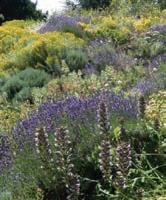
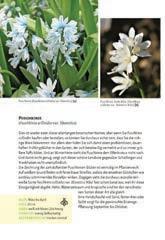

1. edition 2022
96 pages, colour illustrations throughout hardback, 297 x 297 mm
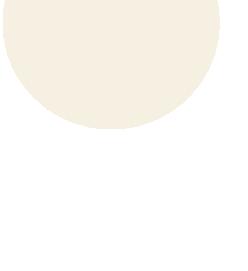
Original language: German Rights available: world-wide

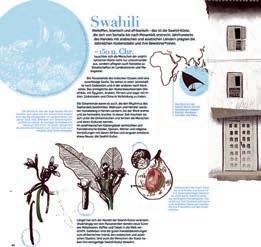


Off to the savannas of Africa! About half of the African continent is covered with savanna. The magnificent illustrations and short texts in this book tell of the people, animals, and plants of the savanna areas. Children and adults embark on a journey to tough plants, to hungry predators and their nimble prey, to the evidence of ancient cultures and to vibrant metropolises. Sub-Saharan Africa is full of surprises – come along and let yourself be inspired.

1. edition 2021
72 pages, colour illustrations throughout hardback, 297 x 297 mm
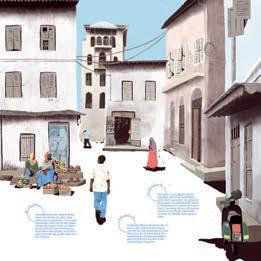
Original language: German
Rights available: world-wide
Katharina Vlcek Amazonia
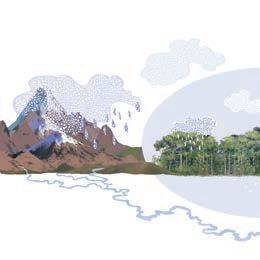
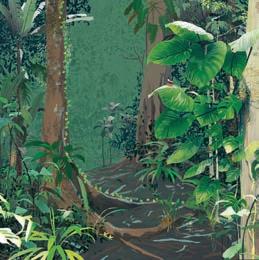
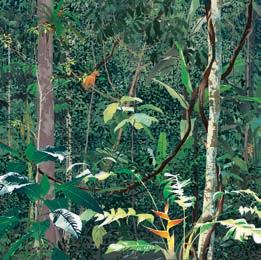

The South American rainforest on the Amazon River is the most species-rich habitat in the world. This magnificently illustrated non-fiction book for children deals in short, child-friendly texts with four major subject areas: with the Amazon rainforest ecosystem, with the animals and plants in the Amazon, with the people in the rainforest and finally with the destruction of the rainforest. Simple tips on how children (and adults) in Europe can contribute to the protection of the rainforest and more sustainability in everyday life complement the richly illustrated and informative book.
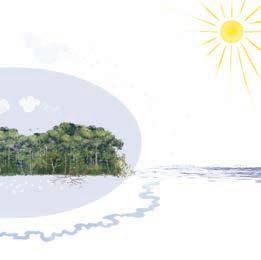

1. edition 2022
224 pages, approx. 175 illustrations
hardback, 190 x 250 mm
Original language: German
Rights available: world-wide
An illustrated walk through different habitats: fields, meadows, reedbeds and moors, forests, high mountains. It opens the eyes for small and unknown things, arouses curiosity, reveals hidden connections and tells unknowns. With his illustrations, multi-award-winning artist Johann Brandstetter shows us the beauty and diversity of our habitats and their inhabitants. Biologist Elke Zippel provides insight into the interrelationships of selected plants and animals with expert texts.

1. edition 2020
216 pages, 100 colour plates
hardback, 300 x 240 mm
Original language: German
Rights available: world-wide
Thomas Griesohn-Pflieger / Iris Lichtenberg
The Beauty of our Native Birds
With 100 watercolour paintings from the Collection of the Fondation Robertdas kräftige, singende Flügelgeräusch des Höckerschwansdie anderen Spechte. Fettreiche Samen spielen gerade im-gen winterlichen Wald einen Haufen zerhackter Fich-platz den Anforderungen des Spechtes nicht genügt, wirdILLUSTRATED NATURE
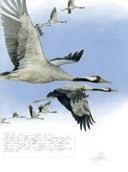
With 100 illustrations from the Collection of the Fondation Robert. The artists and naturalists Léo-Paul Robert (1851–1923) and Paul-André Robert (1901–1977) are among the most important international bird painters. Between 1870 and 1930, father and son worked together to create a unique ensemble of hundreds of watercolours of birds of great artistic and scientific value.

Buntspecht – Fassadenspecht
1. edition 2017
280 pages, 100 colour illustrations and more than 120 colour photographs
hardback, 300 x 240 mm
Original language: German
-dass auch diesem Jahr wieder geklappt hat. Dass dieman «zi-witt» rufen, um ihre Erregung loszuwerdenging das gut. Die Schwalben fanden nicht nur EingangHöhlen lebten, liegt hier vielleicht der Ursprung der-vieh wie Rinder, Pferde, Schweine für reiche Fliegenernte-Stoßfedern sind, desto schneller findet ein Schwalben-gen dann Rauchschwalben mit körperlangen Stoßfedern-
Pfau-Schellenberg / Luc Lienhard

Menschen rufen mich und klagen mir Leid, dasste hochinteressant. Sie leben schließlich davon, Holz-den. Das Trommeln der Spechte, das den Reviergesang der -
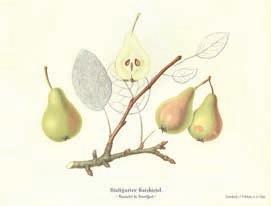

The Masterpiece «Swiss Fruit Varieties»
50 apple and 50 pear varieties comprehensively described and illustrated in detail –that’s the pomological masterpiece «Swiss Fruit Varieties», published by Gustav Pfau-Schellenberg in 1872. This bibliophile reprint is supplemented by an introduction considering the book in the context of the history of pomology and recognizing the outstanding achievement of all participants.
stumpfte Spitze ungleich wird. Die Schale ist zart, fein, am Baume leicht beduftet, glatt, etwas stark, später geschmeidiger, blaß hellgrün, dann gelblichgrün; ist sie hellgelb, so ist gewöhnlich die Frucht schon überreif und teig. Die Sonnenseite der freihängenden Früchte ist mit einer erdartigen, bräunlichen Röthe stark verwaschen, welche bei nur etwas beschatteten Früchten oft aus einer großen Menge bräunlicher, rothumkreister Punkte besteht, während auf der Schattenseite diese Punkte dunkelgrün erscheinen. Um die Kelchwölbung zeigen sich ganz feine, größere oder kleinere Rostanflüge oder Figuren, die schwach rauh anzufühlen und zimmetfarbig sind. Die Frucht hat nur einen schwachen Geruch und welkt nicht. Das Fleisch ist weiß, wohlriechend, etwas körnig, saftvoll, butterhaft schmelzend, von einem süßen, gewürzhaften, fein zimmetartigen oder von einem erhabenen, süßsäuerlichen Muscatellergeschmack; zu früh genossen,
sein. In St. Gallen (2000 Fuß üb. M.) kömmt er noch gut fort. Eigenschaften des Baumes Der Baum wird nur mittelgroß, wächst ziemlich lebhaft, hat eine pyramidale Krone mit spitzwinklig anliegenden Aesten, welche sehr früh eine Menge Fruchtspieße ansetzen. Die Sommertriebe sind ansehnlich lang, nicht sehr stark, etwas stufig, an der Spitze verdickt und wollig, oft ein wenig gewunden, auf der Sonnenseite mit einem ganz dünnen Silberhäutchen gefleckt, violetartig braunroth, ziemlich glänzend und nur mit sehr wenigen, unten am Triebe deutlich sichtbaren, feinen weißgrauen Punkten besetzt. Das Fruchtholz ist stark silberhäutig und kurz. Die Blüthenknospen sind kegelförmig, stumpfspitz, dunkelbraun, oft stark silberhäutig und abstehend. Die Augen sind dick und sehr spitz, stehen unten am Trieb sehr weit, oben nur wenig ab, sind braun und weiß geschuppt und sitzen auf stark vorstehenden, häufig in der Mitte etwas gerippten Augenträgern. Die Blätter sind durchschnittlich klein und verschieden in der Form, ellipist das Fleisch fast abknackend und gewürzlos, um das Kernhaus herum etwas steinig. Das Kernhaus ist klein und geschlossen, die Kammern länglich und geräumig, mit wenig vollkommenen, kaffeebraunen Kernen. Die Frucht reift Ende August und Anfangs September, hält nur wenige Tage im besten Stadium ihrer Reife. Es giebt nicht viele Früchte, bei denen dieses Stadium so schwer zu treffen ist. Der richtige Zeitpunkt ihrer höchsten Güte ist der, wenn das Grüne in’s Gelbe übergehen will. Nutzung Die Stuttgarter Gaishirtel ist eine der allerköstlichsten Birnen, muß aber wenigstens acht Tage vor der Zeitigung gepflückt werden. Sie verdient die allgemeinste Verbreitung.
tisch, mit einer sehr langen auslaufenden Spitze, eirund, rundlich, meist herzförmig, stehen mit den Rändern etwas aufwärts, sind aber am Stiel etwas rückwärts gebogen und haben eine kurze, halbaufgesetzte Spitze. Wie die Form, so ist auch ihre Größe verschieden, es giebt 1 ¼“ breite und 2“ lange, 1 ¾“ breite und 2“ 4“‘ bis 7“‘ lange Blätter; obschon am Blattsaume etwas wollig, sind sie doch gewöhnlich glatt, meist ganzrandig, zuweilen wellenförmig, ziemlich dunkelgrün und langgestielt (1 bis 1 ½“ lang), ohne Afterblätter. Die Blätter der Blüthenaugen sind nicht größer, haben dagegen aber längere Stiele. Der Baum trägt bald und alljährlich und sehr oft Eigenschaften der Frucht Die Gestalt der Birne ist perlförmig, nach oben kugelig, nach unten, dem Stiel zu, stumpfkegelförmig, ähnlich der langstieligen französischen Blankette. Der Bauch sitzt der ganzen Fruchtlänge nach dem Kelch hin, um den sie sich halbkugelförmig, zuweilen auch etwas plattrund zuwölbt. Nach dem Stiel macht sie eine starke Einbiegung und endigt mit einer schönen, abgestumpften Spitze. Die Frucht ist klein gewöhnlich 1“ 3“‘ (39 mm) breit und 1“ 9“‘ (57 mm) lang. Der Kelch ist vollkommen, offen, weich, langgespitzt und schmalblätterig, meist sternförmig, obenauf oder flachsitzend, zuweilen mit mehreren Falten oder kleinen Beulen umgeben, welche die Kelchfläche uneben machen. Der Stiel ist verhältnißmäßig stark, ungleich lang, er differirt zwischen und 10‘‘‘, holzig, wie eingesteckt, selten in einer kleinen Grube, ist aber stets mit einigen feinen Rippen, oft auch nur von einem etwas starken Fleischwulst umgeben, wodurch die abgeLucas Cl. I. Ordn. 1. [ 215 \
128 pages, colour photographs throughout paperback, 235 x 260 mm
Original language: German
Rights available: world-wide



Much to the annoyance of parents and teachers the smartphone has become a constant companion for kids. But smartphones and tablet computers can be also used creatively and activating. In this book kids find a lot of suggestions and instructions how to use their smartphones to discover nature and to be creative. The walks in the nature will become exploratory expeditions on which the senses are sharpened. The smartphone is used as a camera and as well as a recorder.

128 pages, more than 470 colour photographs and more than 150 illustrations


paperback, 235 x 260 mm
Original language: German
Rights available: world-wide
Rita and Frank Lüder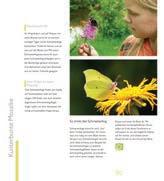


This book offers a playful and lively way for young readers to discover the manifold world of fungi. Besides informative texts with images and illustrations the kids will find plenty of ideas and easy instructions for creative activities.

1. edition 2012
174 pages, more than 320 photographs and illustrations
paperback with flaps, 235 x 260 mm





Original Language: German












Rights available: world-wide
 Frank Hecker / Katrin Hecker
Frank Hecker / Katrin Hecker






How does the nettle sting? And where is the spider taking its strand from? How does the world look like through the compound eye of a dragonfly? And what is the construction plan of a bird’s feather? Children have many questions and a look through a pair of binocular is likely to unveil a lot of fascinating answers. This book includes 20 step-bystep explained projects for children from about the age of 7 years to explore their natural environment, skilfully written by two biologists and successfully tested with children, with many wonderful photographs and figures.
128 pages, 165 colour photographs and 33 iIllustrations
paperback with flaps, 155 x 225 mm
Original language: German Rights available: world-wide
Annekathrin SchmidYou do indeed harvest fruit, but how well do you actually know your fruit trees? Why do they bear apples one year but not the next? Why is frost during blossoming a disaster? And why does the cherry tree develop buds as early as the end of June?
This is a book about the life of fruit trees. If you know the structure of cherries, pears, apples and plums and understand a little about biochemical and physical processes, you will understand their appearance better.
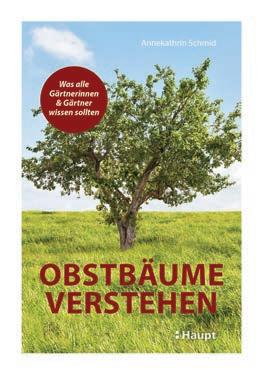

304 pages, 300 colour photographs and 65 illustrations
paperback, 155 x 225 mm
Original language: German Rights available: world-wide, except French
Margot and Roland Spohn
Flowers and their inhabitants
Field guide to multifarious life on garden and wild flowers

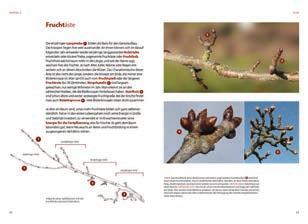
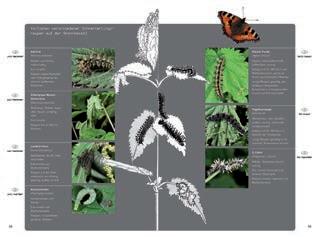

Every flower offers from the root up to the fruit a habitat for beetles, butterflies, bugs, mushrooms and others. Some of them turn out to be enemies and others friends, and often a high specified partnership originates between flower and inhabitant. The book presents the rich life of 80 local flowering plants, explains how the partners interact, how they benefit each other and how unbidden guests are disinvited. Many of these amazing relationships can be easily observed.
1. edition 2019
256 pages, 52 illustrations, 124 photographs
hardback, 195 x 230 mm
Original Language: German
Rights available: world-wide



Conditions are harsh in alpine habitats. A cold wind can blow constantly, temperatures can fluctuate wildly, winter conditions with snow and ice last a particularly long time. In order to survive, alpine plants have adapted to these conditions in several unique ways. 50 plants that have developed remarkable survival strategies or share a special history with the Alpine habitat are presented in this book. These stories tell us a great deal about the origin of the Alps, the special features of their habitat and why climate change is changing these habitats so dramatically.
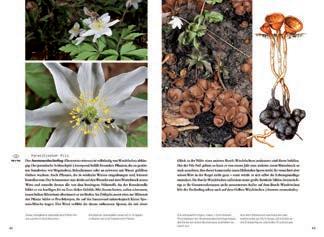
1. ed. 2018, 2. ed. 2022
880 pages
colour photographs throughout hardback, 155 x 225 mm

Original language: German
Rights available: world-wide, except French
Rita Lüder
Recognizing plants, differentiating between botanical families, and understanding ecological relations: This is on the agenda of this teaching and learning manual. In a well devised and comprehensible way, the book lists 36 plant families, 60 genera and more than 600 species. The plants are given with full information on distribution, leaves, flowers, and fruit, richly illustrated with photos and drawings. Furthermore, there are tables on how to avoid confusion with plants of other families or genera along with brief portraits of the most important family or generic characteristics.
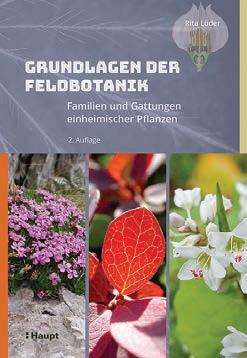 Yann Fragnière, Nicolas Ruch, Evelyne Kozlowski, Gregor Kozlowski
Yann Fragnière, Nicolas Ruch, Evelyne Kozlowski, Gregor Kozlowski
"Botanical Basics at a Glace" presents 40 plant families, which are among the most common flora in Central Europe and represent an indispensable basis for every botanist. A double page with diagrams, photos and graphics provides a quick overview of each family. A representative selection of species with short style portraits illustrates each family.

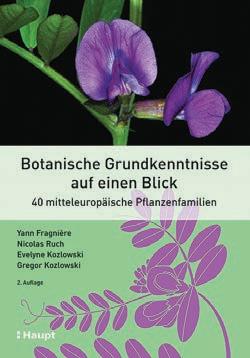
320 pages, colour illustrations and photos throughout hardback, 170 x 235 mm
Original language: German
Rights available: world-wide, except French
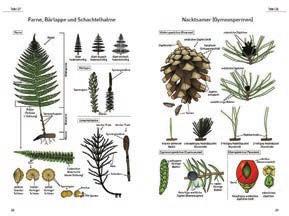
What does a double-lipped flower look like? And what is a zygomorphic flower? As a beginner in plant identification, you quickly reach your limits when the description goes beyond the colour of the flower or common leaf shapes.
This richly illustrated and practice-oriented plant glossary comprises about 2000 important terms to plant identification. Most of the definitions are accompanied by clearly understandable illustrations. 46 visual plates on groups of terms – such as "leaf forms", "inflorescences", "growth forms", "hairiness", and many more – provide a quick overview of the terminology in field botany and thus establish an indispensable basis for successful plant identification in the field.
176 pages, more than 1000 illustrations paperback, 130 x 193 mm

Original language: German
Rights available: world-wide, except French
Rita Lüder
Identifying Trees
Blossoms, Buds, Leaves, Fruits

Identifying trees is a challenging task, with their appearance changing sometimes radically each season. With four different identification keys, detailed portraits, and with explanations of the most important terms and features, this book is an indispensable help to identify the 125 trees and brushes of Central Europe.

1. edition 2013, 2. edition 2019
368 pages, more than 1000 colour photographs
paperback, 138 x 210 mm
Original Language: German
Rights available: world-wide, except French
Peter M. Kammer
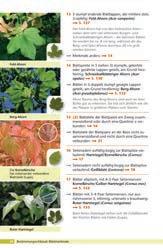


Handling a dichotomous key presents a problem for many persons interested in botany – to much knowledge is required to achieve, reasonably successfully, the aim. The author has therefore developed a key, which enables to start plant identification and provides the necessary skills. For this purpose representative and common plants have been selected.
Fragen 579–584 579 a Größere Blätter mindestens 6-mal so lang wie breit Echium vulgare Größere Blätter höchstens 6-mal so lang wie breit Blattstiel verläuft dem Stängel entlang herab zum Symphytum
1. edition 2016, 2. edition 2021
416 pages, 866 colour photographs, and 85 illustrations
paperback, 138 x 210 mm
Original language: German
paperback, 138 x 210 mm
Original language: German
Rights available: world-wide
10 bis 20 mm lang, gelblich oder purpurrot bis rotviolett, mit Blütenzipfeln; Früchte (Nüsschen) pro Blüte Fortpflanzung: Blüte Mai bis August; zwittrig; Insektenbestäubung; Ameisenausbreitung Wissenswertes: Die fein zerkleinerte, frische oder getrocknete Wurzel wird mit Wasser zu einem Brei verarbeitet und
Peter M. Kammer
Fragen 877–880 in Form von Umschlägen bei Blutergüssen, Prellungen, Verstaukönnen fein geschnitten zu Salaten gegeben werden.
879 a Ährchen mit mindestens 7 mm langen, etwas steifen, borstenförmigen Haaren (Grannen) Elymus caninus ………………………………………………… Elymus repens Ährchen mit mindestens 10 mm langen, etwas steifen, borstenförmigen b Grannen höchstens mm lang Brachypodium pinnatum 583 a Kelch mit abstehenden Haaren Myosotis sylvatica ………………… b Kelch mit anliegenden Haaren Myosotis scorpioides (S. 230) Polygonum aviculare (S. 311)



– Süßgräser, Echte Gräser Zwenke: unbekannt; brachy- griech. kurz; -podium griech. Fuß; pinnatum lat. gefiedert 40 bis 120 cm hoch; Pflanze hellgrün; Blätter bis 6 mm breit, Blatthäutchen bis mm lang; Blütenstand 5 bis 15 cm lang; Ährchen 20 bis 40 mm lang, gelbgrün, mit bis 7 mm langen Grannen, abwechselnd links und rechts am Stängel stehend Fortpflanzung: Blüte Juni bis August; zwittrig; Windbestäubung; Wind- und Tierausbreitung Wissenswertes: Raupenfutterpflanze des Schachbrettfalters Fragen 579–584 Dunkelgrünes oder Dunkles Lungenkraut Pflanzenfamilie: Boraginaceae – Borretsch- oder Raublattgewächse lat. lungenkrank; Büscheln, 8 bis 18 mm lang und bis 13 mm im Durchmesser, zuerst rötlich, nachher violett und blau, mit 5 Blütenzipfeln; 4 Früchte (Nüsschen) pro Blüte Insektenbestäubung; Ameisenausbreitung Vorkommen: Laubmischwälder Tee aus dem getrockneten Kraut wird bei Bronchialkatarrh getrunken. Myosotis sylvatica Hoffm. Wald-Vergissmeinnicht Boraginaceae –Raublattgewächse 4 bis 1,6 mm lange Früchte (Nüsschen) pro Blüte Fortpflanzung: Blüte Mai bis Juli; zwittrig; Vorkommen: Feuchte Wiesen, Wälder
Alpine Plant Identification Made Easy





700 alpine plants for beginners







Handling a dichotomous key presents a problem for many persons interested in botany – to much knowledge is required to achieve, reasonably successfully, the aim. The author has therefore developed a key, which enables to start alpine plant identification and provides the necessary skills.
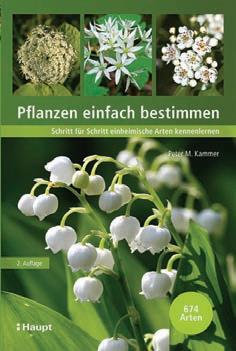
Man spricht in solchen Fällen von „edaphischen Vikarianten“, d. von nah verwandten Arten, die auf unterschiedlichen Böden wachAlpenrosen sind empfindlich gegenüber Spätfrösten und kommen dementsprechend nur an Stellen vor, wo eine langandauernde, isolierende Schneeschicht liegt. Rhododendron ferrugineum Rostblättrige Alpenrose Rhodo- griech. Rose; -dendron griech. Baum; ferrugineum lat. rostfarbig Bis 150 cm hoch und über 100 Jahre alt werdender Zwergstrauch; Blätter 1.5 bis cm lang, oval, derb, immergrün, Blattoberseite glänzend; Blüten 10 bis 18 mm lang, mit roten Blütenblättern; Früchte (Kapseln) kugelig (Bienen und Hummeln); Windausbreitung Wissenswertes: Die Rostblättrige Alpenrose wächst bevorzugt auf kalkarmem Untergrund im Gegensatz zu ihrer nah verwandten Art, der Bewimperten Alpenrose, die stets auf kalkhaltigem Untergrund vorkommt. Man spricht in solchen Fällen von „edaphischen Vikarianten“, d. h. von nah verwandten
1. edition 2016
268 pages, approx. 500 photographs and illustrations
paperback, 138 x 210 mm
Original language: German
Rights available: world-wide



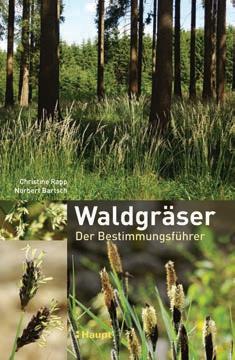
The different grasses of the European woodlands play a key-role as indicator species for botanists, forest rangers, ecologists and conservationists. A solid knowledge about their characteristics is, thus, essential to them. The fieldguide helps identifying the different –but often very similar – species, offers all relevant botanical facts and informs about each species‘ specific indicator functions.
1. edition 2020
200 pages, approx. 300 photographs
hardback, 155 x 225 mm

Original language: German
Rights available: world-wide


Forest-floor mosses are a species-rich and diverse plant group. In this fieldguide they are treated as part of the forest flora and in their function as indicator plants. The book is aimed at foresters, ecologists, environmental pedagogues, teachers and pupils as well as students, and last, but not least at plant lovers who dare to approach a not easy group of plants.
II. Schlüssel für die Gipfelmoose (inkl. Haarmützenmoose) 1a Stämmchen spiralig beblättert, ohne deutlich abgeflachte Stämmchen 2zeilig oder verflacht beblättert 2a Stämmchen 2zeilig beblättert, Blättchen mit Rückenflügel: Blattrand hin 2schichtig (Scheidenteil), obere Blatthälfte ohne Flügel 1schichtig (Spreitenteil); aufeinanderfolgende Blättchen «reiten aufeinander», indem der Scheidenteil die 1schichtige, hintere Hälfte des jüngeren Blättchens aufnimmt. An feuchten, offenerdigen, lehmigen oder tonigen, nährstoffreichen Böden in Laubwäldern, auf Waldwegen oder an Wegböschungen Fissidens taxifolius Eibenblättriges Spaltzahnmoos nur die sterilen, niederliegenden oder übergebogenen Stämmchen verflacht beblättert (Blättchengröße nimmt zur Spitze hin ab); fertile Stämmchen spiralig beblättert und aufrecht; männliche Gametangienstände endständig, mit auffälligen, rosettenartig angeordneten Hüllblättern (Perichaetium); Blättchen rundlich, eiförmig-elliptisch oder länglich-lanzettlich bis zungenförmig Kriechsternmoose Plagiomnium) 3
4–6 (–7) mm lang, Blattränder ganzrandig, nach oben umgeschlagen. Rasen bis (5) cm hoch. An lichten, trockenen Polytrichum piliferum Haartragendes Frauenhaarmoos 6a Blättchen schmal lanzettlich (sehr viel länger als breit), gerade oder sichelförmig gebogen; Blattrippe 1fach oder sehr breit oder mit Assimilationslamellen
kriechende Hauptstämmchen. In Erlenwäldern, Auenwäldern, Schluchtwäldern, quelligen Stellen in Wäldern, Gebüschen und Pflanzen nicht bäumchenartig 8a Blättchen lanzettlich oder zungenförmig ➞ 10 8b Blättchen rundlich oder eiförmig 9
Muriel Bendel, Françoise Alsaker
mit Fransen, wegen der charakteristischen Ausprägung der Stammblättchen. Lebensform: Rasen locker, bläulich grün. Stämmchen bis 20 cm lang, Pflanzen zierlich, Sklerodermis grün; Äste mig, Ränder über die breite Spitze bis hinunter an den Seiten fransig nen des Köpfchens als deutliche, steife «Halskrause» sichtbar,

The nature guide to the fern plants of Central Europe
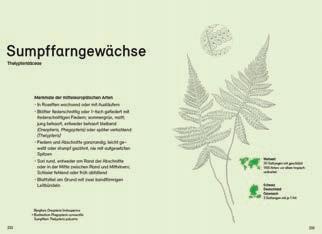
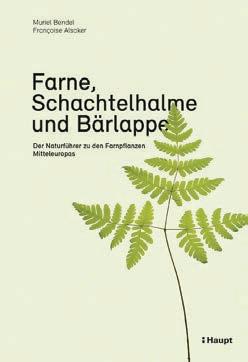




Fern plants are a diverse group of plants, including horsetails, clubmosses, moss ferns, moonworts and quillworts in addition to the actual ferns. This richly illustrated book presents all 104 fern species of Central Europe, the 13 most important families and the most common hybrids. The introductory section provides information on the biology, ecology and endangerment of the fern plants, gives practical tips for identification and is rounded off by a newly designed field key to all fern plants of Central Europe. A glossary and scientific drawings convey the fern-specific terms.
1. edition 2021
304 pages, 325 photographs and 55 illustrations
paperback, 155 x 225 mm
Original language: German
Rights available: world-wide
1. edition 2022
176 pages, approx. 320 illustrations paperback with flaps, 155 x 225 mm
Original language: German Rights available: world-wide




1. edition 2020
256 pages, approx. 200 colour
photographs
paperback, 155 x 225 mm
Original language: German
Rights available: world-wide
Angela Niebel-Lohmann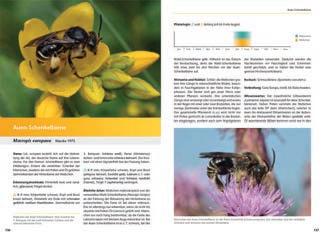

Wild bees play an important role in the ecological balance of the nature as pollinators, but are severely threatened by habitat loss. In order for them to really benefit from what is on offer, they need not only suitable forage plants, but also appropriate habitats and nesting opportunities. This book shows which wild bee species can be supported specifically and sustainably with which measures, using 30 species that are easy for the layperson to recognize.


1. edition 2021
288 pages, 115 illustrations, 7 charts paperback, 155 x 225 mm
Original language: German
Rights available: world-wide
Janina Voskuhl / Herbert ZucchiCities offer a diverse habitat for solitary bees – parks and gardens, brownfield land, slops or old building walls. The authors follow the tracks of these fascinating animals and show where mining bees, mason bees and other species can be found in urban areas. Expertly and entertainingly they offer fascinating insights into their biology and practical guidance for supporting them. With numerous suggestions for urban exploration tours, conservation of solitary bees and project ideas for families and schools.
Gehölzbändern und anderen Strukturen ist zugleich der Verlust von Pflanzen als Nektar-und Pollenspender sowie Larvennahrung verbunden. Außerdem gehen wichtige Ruhe-undÜberwinterungsflächenverloren.MitderEntwässerungvonFeuchtgebieten, der Umwandlung von Wiesen und Weiden in Ackerland sowie der ÜberdüngungderLandschaftistgleicheinganzesBündelvonFaktorenangesprochen,welcheszurPflanzenartenverarmungführtunddamitautomatisch auch einen Insektenrückgang nach sich zieht. So haben 40 % der Farn- und Blütenpflanzen Deutschlands, die bestandsgefährdet sind, ihr HauptvorkommenimGrünland,vieledavonimFeuchtgrünland.IhrSchwundbedeutetden Verlust von Tracht- und Futterpflanzen für zahlreiche Insekten. Die ÜberdüngungderLandschaft,einResultatvonStraßenverkehr,Verbrennungsanlagen undvorallemvonderLandwirtschaft,führtabernichtnurzurPflanzenartenverarmung,sondernbringtnochanderenegative fektemitsich:Insekten,die WärmeundTrockenheitbenötigen,nehmenstarkab,dennwovielDüngerist, wachsen die Pflanzen schneller, dichter und oft auch höher, sodass es am Boden zu schattig und zu kühl ist. Stickstof wird dann zum Erstickstof.Von StickstofgehtabernocheineanderenegativeWirkungaus,wieneuereUntersuchungenbelegthaben:HoheStickstofgaben,
Sigrun Mittl


Today the native honeybee is on the verge of extinction, and our beekeeping colonies are also suffering hardship. But there is hope, because sustainable and animal-friendly beekeeping is possible. The wild honeybees, which also survive healthily in our forests and landscapes, are of particular importance. What can we learn from them and incorporate into our beekeeping practice? This book compiles the most important scientific findings and explains how they can be implemented in beekeeping practice.
Wie Schmetterlinge leben
Wundersame Verwandlungen, raffinierte Täuschungen und prächtige Farbspiele
hardback, 190 x 250 mm
Original Language: German
Rights available: world-wide, except Russian
Wondrous transformations, subtle deceptions, and splendid plays of colour
This beautifully illustrated book is neither an identification guide nor a reference book. Rather, it is a particularly aesthetically presented portrait of butterflies: with illustrations by the award-winning artist and illustrator Johann Brandstetter, accompanied by expert yet enjoyable texts. You learn about butterflies’ special way of life, their special relationship to plants, or their structure with filigree wings. About 15 butterfly families are presented, their distribution and behaviour, special habitats, migration, mimicry and mimesis, and many other interesting facts.Seggewiße, Edelgard/Wymann, Hans-Peter Discover, Observe and Identify Butterflies and Moths
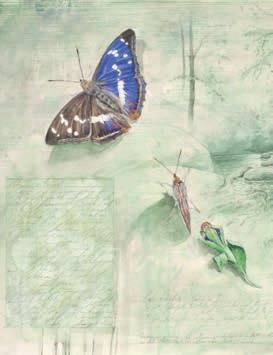


The 160 most frequent diurnal species of Central Europe
Wichtige Merkmale kurzes Schwänzchen
Brauner Eichen-Zipfelfalter Eichen-Zipfelfalter Satyrium ilicis
Bläulinge Lycaenidae Zipfelfalter › Nahrung: Als häufiger Blütenbesucher kann er besonders an Brombeerblüten interessante Blütenpflanzen sind Liguster, Schafgarbe,

1. edition 2015
376 pages, 480 illustrations, 145 colour photographs hardback, 138 x 210 mm
Original language: German
Rights available: world-wide
DER ROTMILAN Ein
Original language: German
Rights available: world-wide
auch auf die Unterseiten der Flügel zu richten. Natürlich spielt auch der Lebensraum eine Rolle. Nachfolgend die Unterschiede des Schwarzkolbigen und des Braunkolbigen Braun-Dickkopffalters.
Adrian Aebischer, Patrick Scherler
The Red Kite
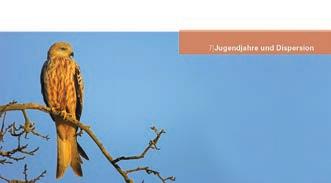
A Bird of Prey on the Upswing
in Striche aufgelöste Flügelunterseite Bläulinge Lycaenidae Englisch: Ilex Hairstreak Raupe Die Jungraupe



oranges Feld oranges Feld opulenter ♂♀ Dieser etwas unauffällige Zipfelfalter ist in den letzten Jahren in seinen Beständen stark zurückgegangen. In Deutschland ist er als „gefährdet“ eingestuft, in mehreren Bundesländern gilt er als „stark gefährdet“ oder „vom Aussterben bedroht“. Eine gezielte Suche könnte vielleicht noch zu einigen unentdeckten Standorten führen. Der Braune Eichen-Zipfelfalter bevorzugt trockene, warme und sonnige Plätze mit Jungeichenbestand und einem ausreichenden Blütenangebot. Diese Standorte können sich in lichten Laubmischwäldern an Waldwegen oder -rändern, in Randbereichen von sonnigen Lichtungen oder auf Kahlschlägen befinden. Raupen fressen hauptsächlich an den Blättern der Jungeichen und halten sich meist im unteren Bereich der Bäumchen › Nahrung: Die Auswahl der Nahrungspflanzen beschränkt sich auf junge Trauben- und Stieleichen in sonniger, geschützter Lage. Flugzeit Der Falter fliegt in einer Generation. Die Hauptflugzeit ist im Juni/Juli.
hellen Eier Stämmchen junger Eichen ab. Dazu wählt es geschützte, warme und sonnige Plätze aus. › Revier: Die ♂♂ verteidigen ihre Re-
ist hell und rötlich gefärbt mit feiner Behaarung. Als erwachsene Raupe ist sie gelbgrün und nur schwach gezeichnet. Es wird vermutet, dass die Verpuppung am Boden stattfindet. Die
q Ei › Flügeloberseite: Die Grundfarbe der Flügel ist bei ♂♂ und ♀♀ braun. Auf den Vorderflügeln befinden sich nach außen hin elliptisch aussehende orangefarbene Flecke, die unterschiedlich groß sind oder auch fehlen können. Sie ähneln dem ♀ des Nierenflecks (Thecla betulae) dessen Flecke jedoch nierenförmig sind. › Flügelunterseite: Auf den braunen Unterseiten ist eine fein gestrichelte weiße Linie, die ab Mitte der Hinterflügel unregelmäßig in Querstrichen und Zacken verläuft. Die orangefarbenen Flecke am inneren Außenrand der Hinterflügel sind mit wenigen, sehr kleinen schwarzen Fleckchen geziert. Diese Merkmale unterscheiden den Falter von anderen, ähnlich aussehenden Zipfelfaltern. › Flügelrand: Das Schwänzchen ist gut ausgebildet. › Ruhehaltung: geschlossenen Flügeln ab, nur selten öffnet er sie ein wenig beim Sonnenbad.
The colourful red kite (Milvus milvus) with its elegant flight is quite popular. But hardly any other bird of prey has experienced such pronounced population changes in Europe in recent decades.
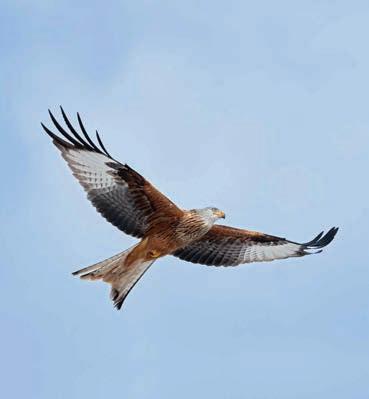
416 pages, 640 colour photographs
paperback, 155 x 225 mm
Original language: German
Rights available: world-wide
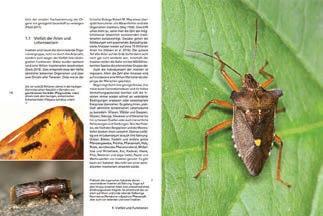




Like all insects, grasshoppers, locusts and crickets pass through various nymphal stages before they become a mature adult. Depending on the species, the number of nymph stages varies; and depending on the species, the nymphs may or may not look very similar to the adults. And it is precisely this circumstance that sometimes makes it very difficult to assign nymphs clearly to one species.
The author has been travelling all over Switzerland for years and has tried to photograph all nymphal stages of all native species.


Forest and woodland insects are ecologically and economically of manifold importance. The book presents – with texts and images – the insects’ different aspects in woodland habitats. The author draws on 25 years of professional experience with woodland insects and an archive of 14,000 insect photographs. He thus addresses experts and interested nature lovers alike.

368 pages, 580 colour photographs
hardback, 180 x 240 mm
Original Language: German
Rights available: world-wide, except English

In Central European terrestrial ecosystems hundreds of mutualisms and other interspecific positive interactions are occurring. In addition to the well-known mutualisms such as insect pollination, seed dispersal by animals, biological nitrogen fixation, and mycorrhiza, the author describes many other positive interactions. The term “positive interaction” is used in the larger sense of the word, including not only the mutualisms bus also interactions which are beneficial to only one of the species and with no effect on the other species. In addition, the positive interactions in nutrient cycles and the facilitation in ecological succession are described.
432 pages, approx. 400 photographs
hardback, 155 x 225 mm
Original language: German
Rights available: world-wide
1. edition 2022
368 pages, approx. 520 colour photographs, 30 illustrations, 15 charts hardback, 240 x 270 mm
Original language: German
Rights available: world-wide, except English
Oliver Lenzen

Who has ever looked very closely and discovered what beauty is hidden in the mass of sand? Who has thought about what stories are hidden behind a single grain that can last for millions of years? The author presents many astonishing facets of sand. He lets his gaze wander over dunes, takes a closer look at individual grains under the microscope: from the mineralogical composition of sand to its geological history to the problems of this most important and now increasingly scarce raw material.




1. edition 2017, 2. edition 2022
144 pages, 460 colour photographs
paperback, 155 x 225 mm
Original language: German
Rights available: world-wide, except English and French
Jürg Meyer



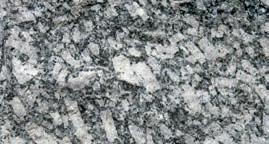

Are you interested in geology and would you like to identify the rocks you find in the field? This book is your tool to do so successfully! It presents a completely novel key to the identification of rocks that does not presuppose profound knowlede in geology, but only a good portion of patience and preseverance as well as a loupe and a steel blade. A short introduction clarifies how the key works and explains a few basic and helpful facts about geology.
Glasige Gesteine 41 Glasige oder glashaltige Gesteine entstehen in erster Linie bei Vulkanen, durch rasches Abschrecken von Lava, sodass sich keine Kristalle bilden können und das Gestein aus abgeschrecktem vorkommt. Typischer muscheligerzung ist meist «sauer»
1. edition 2023
112 pages, approx. 80 illustrations
paperback with flaps, 155 x 225 mm
Original language: German
Rights available: worldwide
Lukas Schuler, Kurt Wirthhydrothermal gebildeten Mn-Erze sind die wichtigsten Rohstoffe für die Mangangewinnung.

How to use light in an environmentally friendly way and what to gain from it
Light pollution is an increasing problem: The artificially illuminated night sky disturbs numerous animals, and humans can suffer from the bright nights preventing them from sleeping. At the same time, artificial light has become indispensable for in many areas of life.


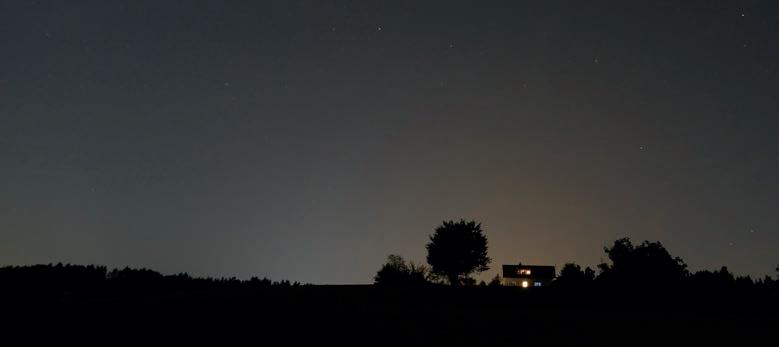
The authors point out how to use light wisely in the dark while causing as little disturbance as possible. A useful guide for anyone wanting to use light in an environmentally conscious way.
Vor- und Nachteile der zeitlichen und dynamischen Steuerung ein.
Mein Licht gehört mir (und nicht dem Nachbarn) Ein Grundstücksbesitz gibt einem das Nutzungsrecht für Grund und Boden auf Luft überflogen und in der Tiefe untertunnelt werden, ohne dass das Privatrecht verletzt wird, sonst müsste einem der Kegel bis zum Erdmittelpunkt und die Luftsäule bis ins All hinaus gehören. Das wäre absurd und würde Verjeden Zweck den Raum ober- und ausserhalb des Grundstücks beliebig nuthinderung der Luftfahrt und des Vogelzugs, Gefährdung des Augenlichts) und jede Art von Werbung ist bewilligungspflichtig, weil sie dazu dient, die Menschen
von Feuchtigkeit, Nebel und Wolken reflektiert, behält dagegen seine ursprüngliche Farbe. Der Blick von oben auf das von unten beleuchtete Nebelmeer zeigt deshalb deutlich, welche
sind, senden wir direkte Lichtstrahlen über unser Grundstück hinaus zu den Nachbarn. Eine bewilligte Anschrift Ihrer Geschäftsliegenschaft macht zu den Öffnungszeiten Sinn für die Nutzer auf öffentlichem und Ihrem Grundstück, Auch wenn das Licht also Ihnen gehört und Sie fast frei sind in der Nutzung, leuchtet, die für den Nutzen relevant sind. Die Lichtnormen verlangen, dass nach unten und nicht über den Horizont hinaus strahlt, Nehmen wir z. B. eine in der Nähe der Hausfassade angebrachte Lichtquelle für den Hauseingang. Im besten Fall erfüllt sie diese Orientierungshilfen gleichzeitig: Erkennen des Hauseingangs Erkennen des Schliessmechanismus’ der Türe Erkennen von Besucher·inn·en (ob erwünscht oder unerwünscht) Signalisieren der Hausnummer für Boten (wenn möglich schon vom Zufahrtsweg aus) Sichtbarkeit des Bodens im Nahbereich (Podest/Treppenabsatz/Gehweg) Dazu reicht aus, wenn die Quelle den Nahbereich aufhellt wenn jemand sich dort aufhält – sagen wir für maximal 5 Minuten. Das reicht für den Austausch mit dem Postboten, um auf dem Absatz die Schuhe zu binden usw. Wie könnte also so eine Lösung aussehen? Nachbarn, da er nur Silhouetten wahrnimmt. Bei einem Einbruch wird das Hat der Hauseingangsbereich ein Vordach, ist es einfacher. Unterhalb der Decke lässt sich Deckenlicht anbringen, das gegen aussen soweit abgeKante der Abschirmung jeweils den Aussenbereich der Nutzfläche berührt, Dabei ist es wichtig, Licht rund um die Personen im Gespräch am Hauseingang zu verteilen, damit die Lichtstrahlen die Gesichter aufhellen, also sie wie vor dem Badezimmerspiegel gut erkennen lassen. So werden die Besucher von vorne und hinten beleuchtet, ob Postbote oder Einbrecher. Die Leuchten dürfen jedoch nicht blenden. Sie sollen den Blick nicht auf sich lenken, sonst erfüllen sie ihren Zweck schlechter.